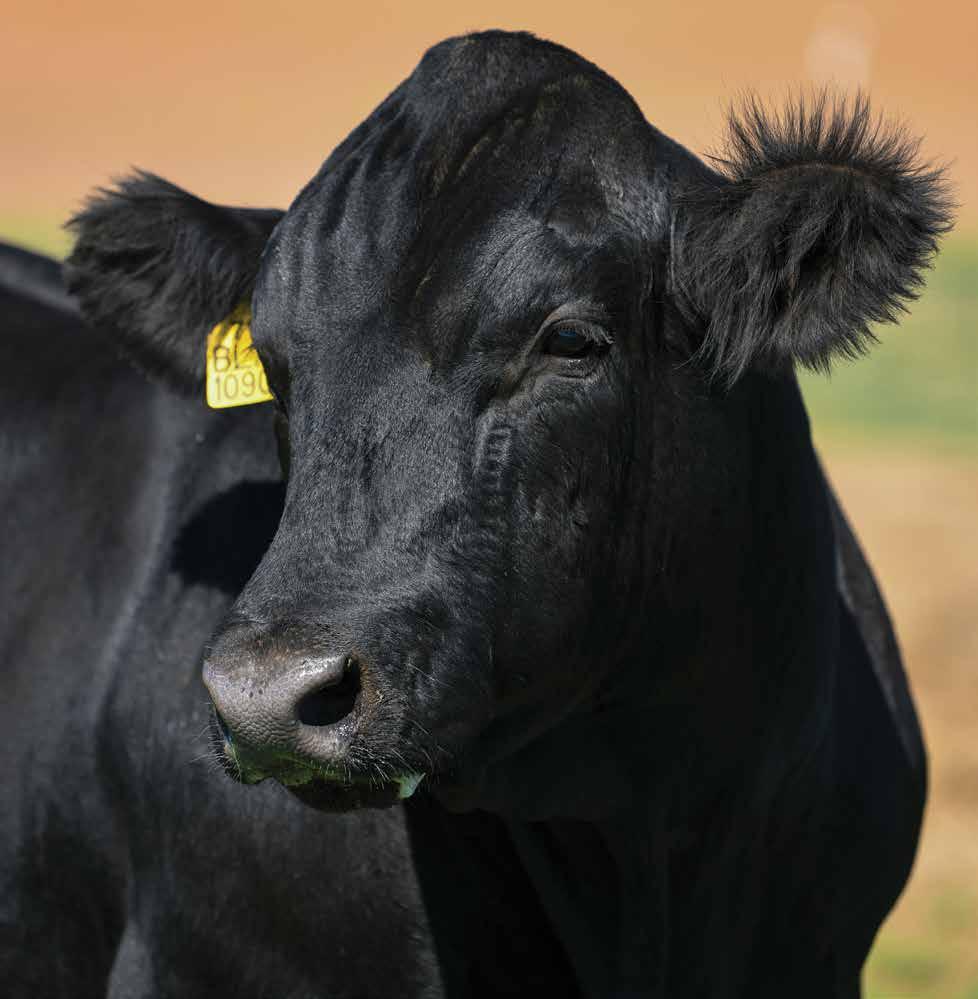




Offspring of these individuals will highlight this sale:





Sunday, October 29, 2023 At The Ranch • Sand Springs, OK
Our most PROVEN AND PROGRESSIVE genetics will be featured in this sale.
FEATURING: Red & Black Lim-Flex Purebred Red Angus Young Fall Pairs • Spring Bred Heifers • Bulls

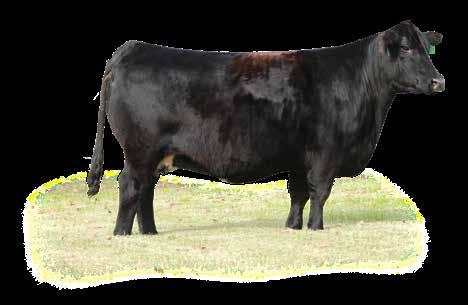

Plan a trip by the ranch this summer to get an early viewing of this offering. Call anytime.
Paul Sisemore, Owner Manager: Elgin Elmore, 918-346-2438 11720 Overlook Dr. • Sand Springs, OK 74063 elginpbars@yahoo.com www.pbarsranch.com
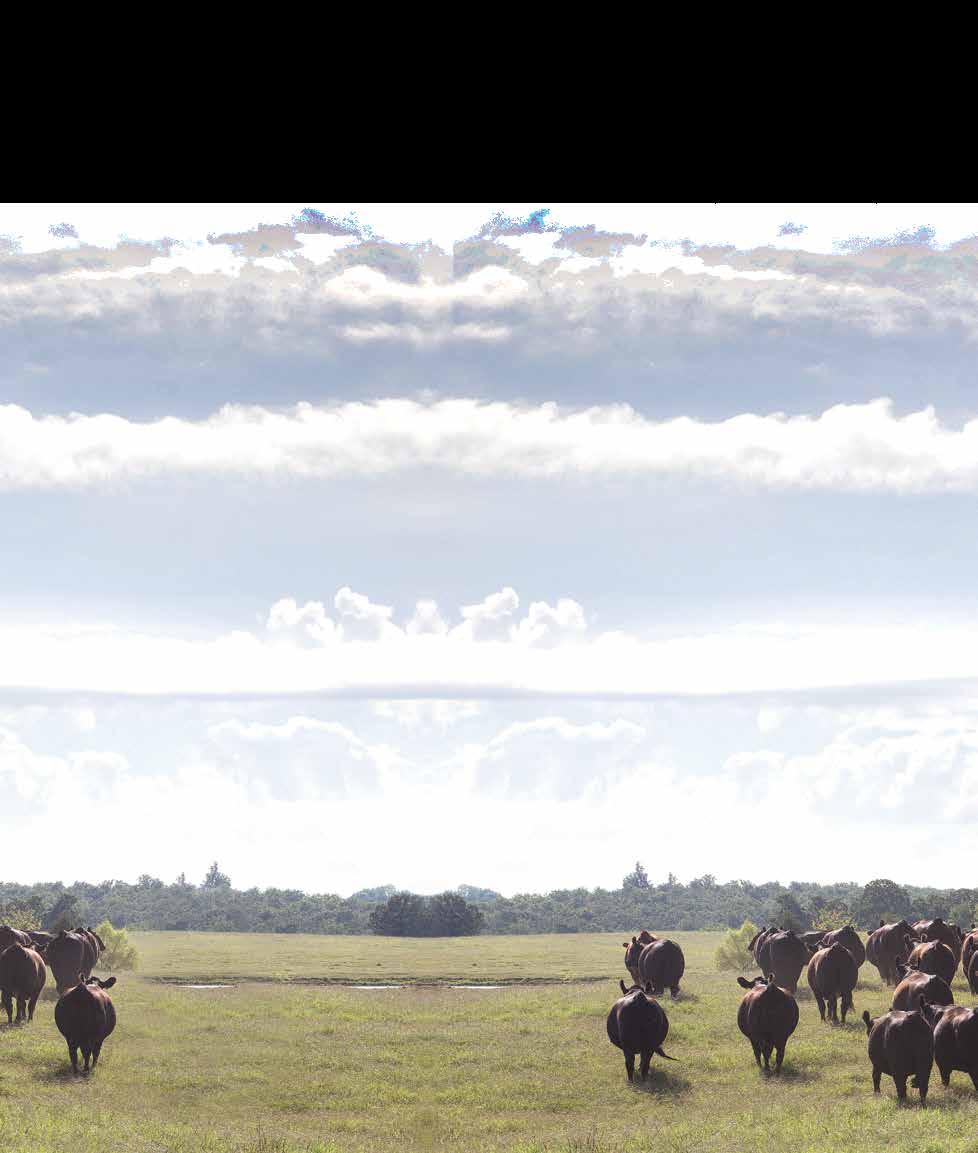




As summer rolls along, we hope you will find time to enjoy a weekend of fun with us on the shores of the Niangua River. You can fish, canoe or just relax at your own pace and you might even find the time to look at a few cattle. Watch
We always welcome your call or visit.


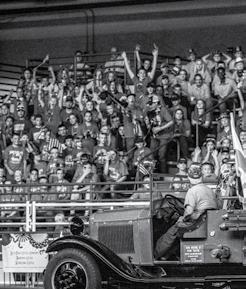

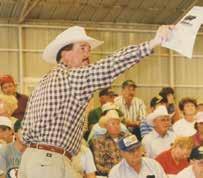
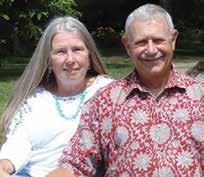
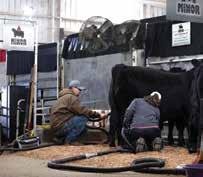
For nearly 50 years, Begert Limousin has been the source for homozygous black, homozygous polled, purebred cattle. These cattle have withstood the test of time proving to be profitable in real world ranching conditions.



If you are looking to refuel your herd bull battery or add some replacement females, give us a call. We have a choice selection of double homozygous purebred bulls and females for sale at all times.
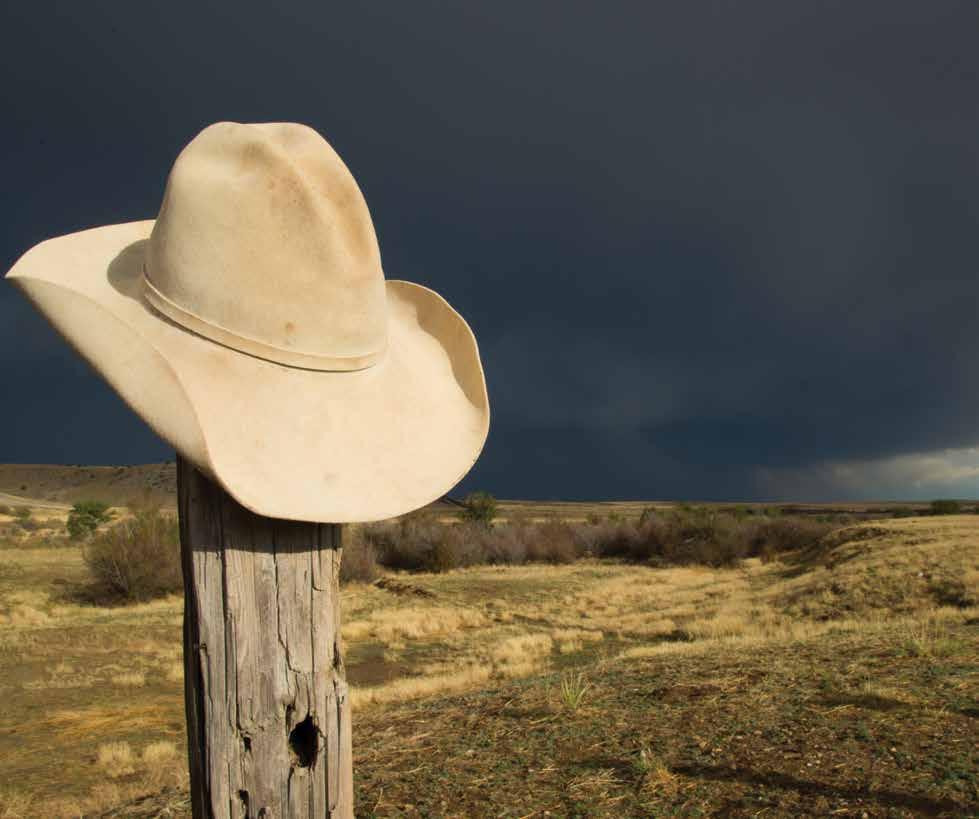
Welcome to the Limousin365 annual Breeder Directory Edition. Within these pages, you’ll find many of the breed’s most progressive and forward-thinking operations showcased, along with multiple feature stories and industry-relevant news articles on a variety of topics. Typically, I would sit and ponder which direction to head with this column. This time, I’ve had a few ideas in mind for a while now. One of which has become a prominent topic while talking with industry leaders. That said, I wanted to reflect upon the opportunities the booming market will present to seedstock and commercial producers. Along with, recognizing juniors, families and staff for their commitment to coordinating a memorable event and keeping the tradition alive at the National Junior Limousin Show and Congress since 1976!
As the beef supply has declined due to producers selling off cattle in response to drought, the market today is reaching record highs. This has blessed producers with an abundance of marketing options. Whether you sell at weaning, after backgrounding, or on a dressed basis, producers are seeing dramatic price increases compared to this same time last year. We have not seen a dramatic increase in prices like this in over a decade, following the last major drought. Given these tremendous price jumps, commercial producers, backgrounders, feedlot operators and packing plants will exert even more pressure upon the value of genetics to increase their profit margins while keeping input costs in check. Optimal genetics will allow producers to keep up with consumer demands in the wake of declining cattle numbers. Enter seedstock producers, more specifically Limousin seedstock producers. Limousin and Lim-Flex cattle are recognized by their all-around flexibility in terms of calving-ease, growth, carcass merit, high dressing percentages and improved maternal abilities. Given the breed’s advantages in efficiency up and down the production chain, the time is now for Limousin breeders to go “all in” on their genetic inputs.
I would like to take this opportunity to commend all of the breed’s devoted juniors and their support networks for their hard work and dedication throughout this show season. With our Regional Junior Shows behind us, we look forward to celebrating our juniors in Rapid City, South Dakota, at the breed’s premier summer event, the National Junior Limousin Show and Congress! We wish all of the families making the trip safe travels. It truly takes a village to make this show possible and that village includes anyone from juniors, siblings and parents to NALF, junior and senior boards and the South Dakota Limousin Association. Looking back at the last 47 years of Junior Nationals it is exciting to see new families being welcomed into a tradition that is not only alive, but thriving. This team of people takes pride in putting on a show that is memorable for everyone involved and it is something the entire breed should be proud of. An event like this offers many positive experiences that allow our breed’s future generation to acquire knowledge and build networks that will be beneficial in their future endeavors wherever life may take them. Many successful professionals today attribute much of their success to the hours they spent in the barn at home and the lessons learned traveling to shows and exhibiting their cattle.
I sincerely hope you enjoy our Breeder Directory Edition. It is of benefit to your program and a promotional piece the breed can be proud of. A big thank you to all of the advertisers, subscribers and those that continue to support and offer feedback as it relates to your magazine, Limousin365 . We are all in this together—Stay Limousin Proud .
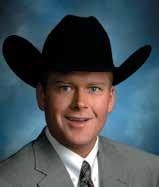

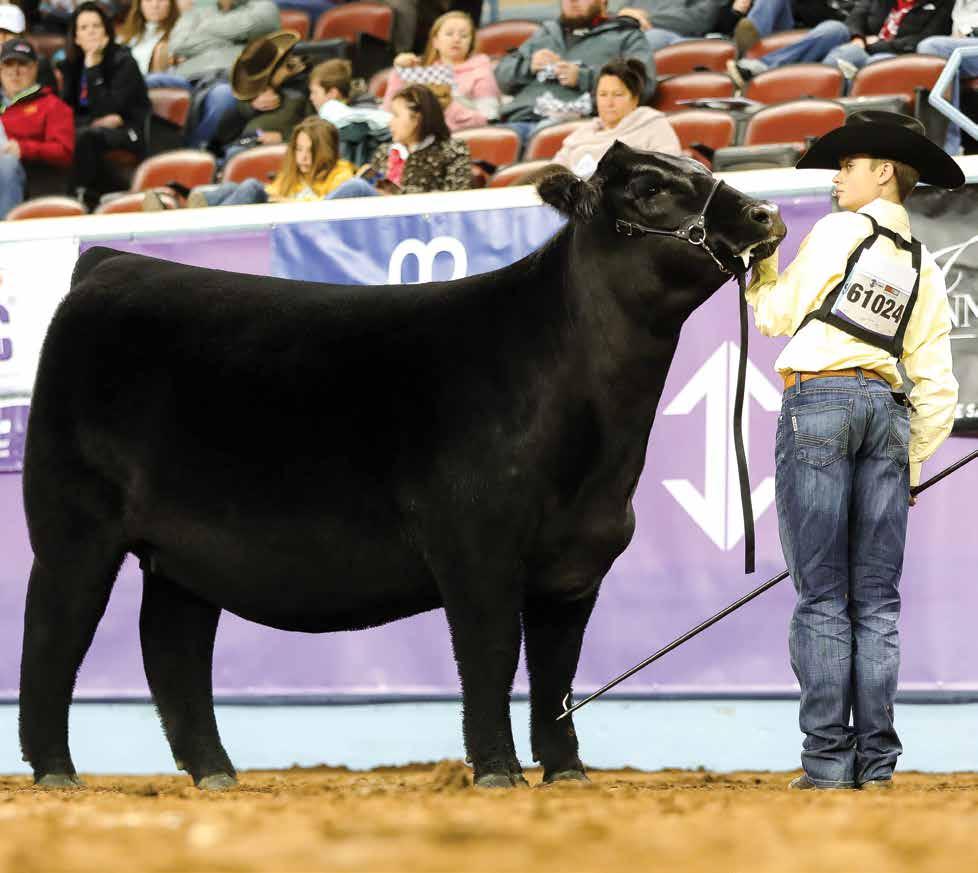
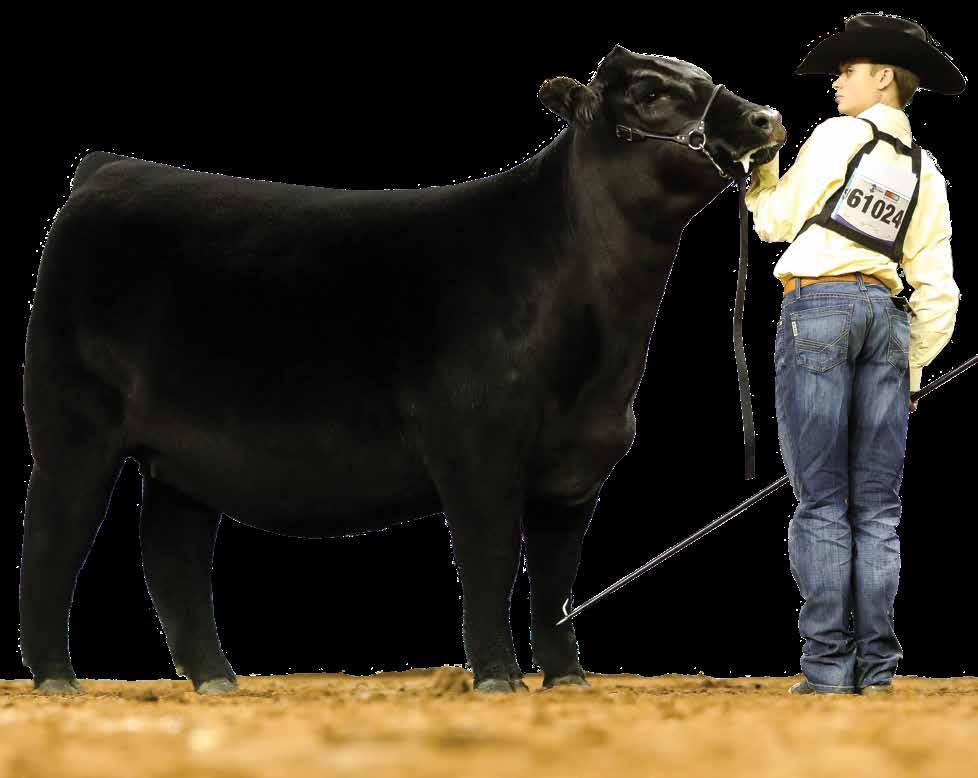
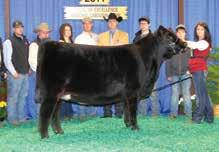






Our 45th annual production sale was a great success because of customers like you. 90 head sold, averaging $6,218. We appreciate everyone’s support from sale day and beyond. Our program is blessed with great cattle and even better people, and for that, we thank you.
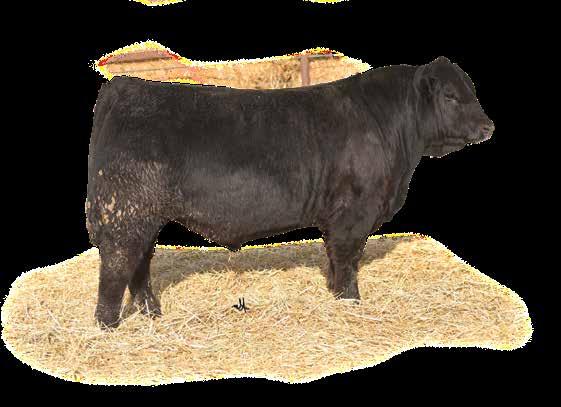
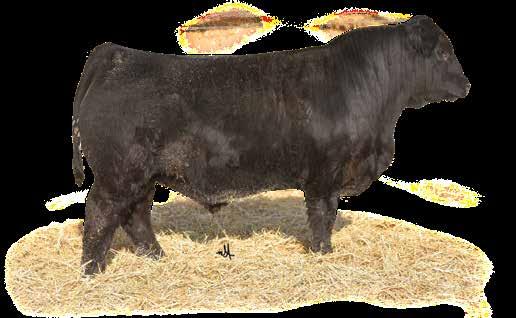
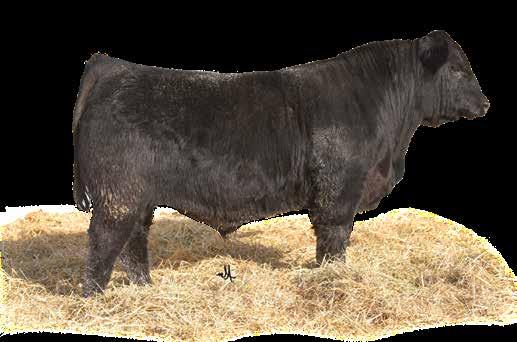

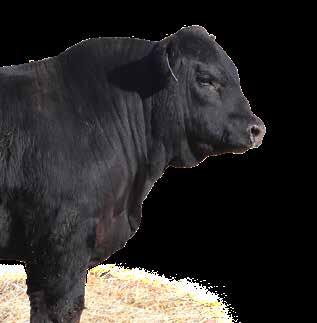
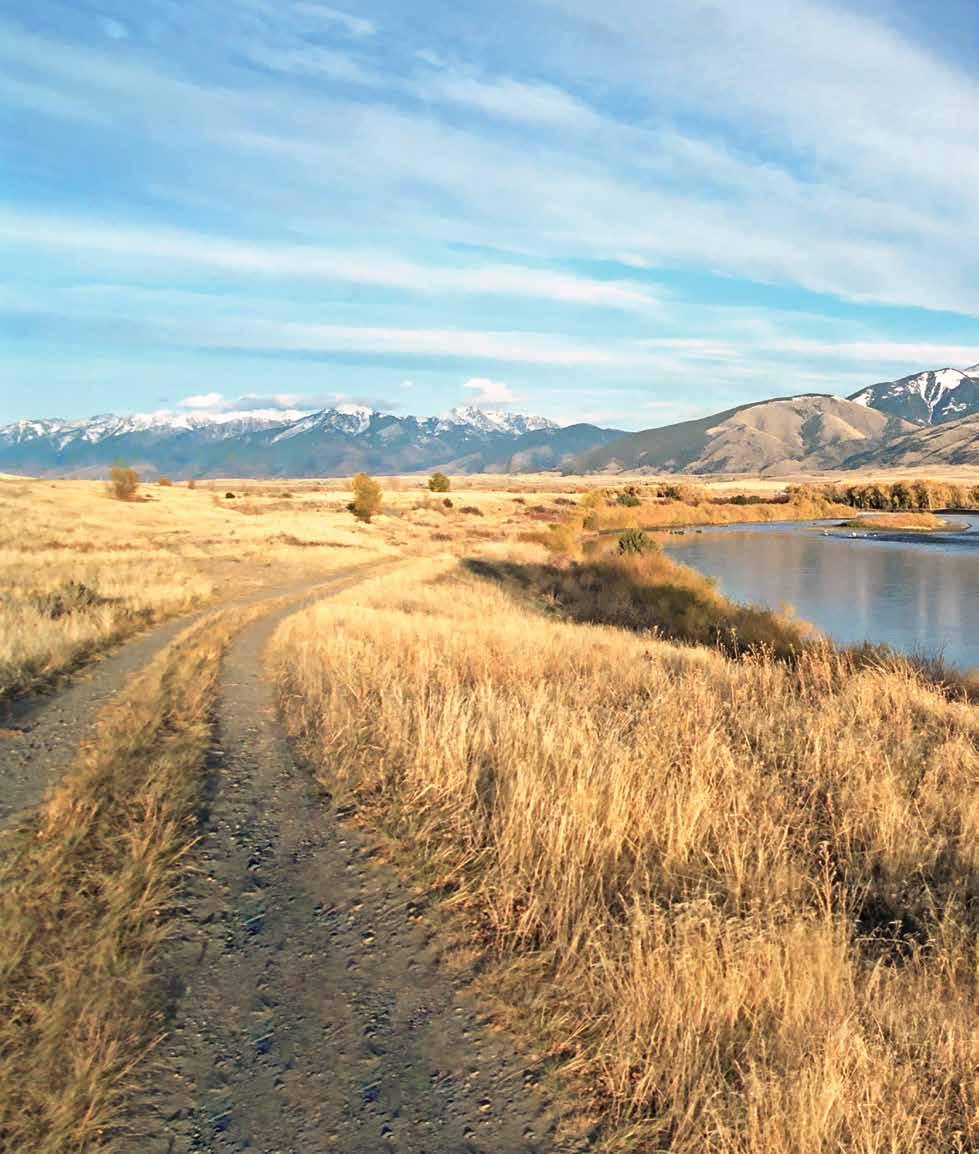



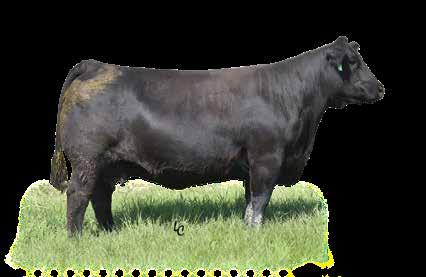



Welcome to the Breeders Directory Edition of Limousin 365! As I think back through the past years of our family’s involvement in the Limousin breed, there is one thing we all look forward to seeing year after year. As Limousin breeders, we look to see the new genetics that each operation has to offer for the upcoming year.
As I write this letter for the July issue, our Limousin junior exhibitors are preparing for a big week at the National Junior Limousin Show & Congress in Rapid City, South Dakota. I would like to thank the South Dakota Limousin Association for hosting
PRESIDENT, Bruce Lawrence ...................................... Anton, TX 806-790-2535 • bll1@speednet.com
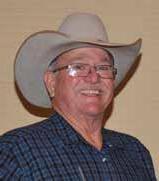
VICE PRESIDENT, Wade Beckman .....................................Roberts, ID 208-313-0235 • beckmanlivestock@gmail.com
SECRETARY, Ronn Cunningham .................................. Rose, OK 918-629-9382 • colronn@yahoo.com
TREASURER, Randy Corns ...................................... Altoona, KS 620-750-0924 • randycorns11@gmail.com
AT-LARGE, Jerry Wulf ........................................... Hancock, MN 320-491-1390 • jerry.wulf@wulfcattle.com
EX-OFFICIO, Dan Hunt ........................................................ Oxford, NE 308-991-3373 • huntlimo@huntlimousin.com
DIRECTORS
Rob Brawner, Wood Lake, NE, 402-376-4465, bulliscreek@gpcom.net
Joey Freund, Elizabeth, CO, 303-475-6062, jfreund@myedl.com
Troy Gulotta, Independence, LA, 985-662-1561, liveoakcattle@gmail.com
Mark Haden, Rogersville, MO, 417-838-6109, buckridgecattle@gmail.com
Austin Hager, Karlsruhe, ND, 701-626-2345, hagercc@srt.com
George Hubbard, Welch, OK, 918-541-5482, georgehubbard@gmail.com
Bart Mitchell, Wauzeka, WI, 608-553-8070, springcreeksbart@gmail.com
Kevin Ochsner, Kersey, CO, 970-396-5525, kevinkochsner@gmail.com
Lance Sennett, Waynetown, IN, 765-366-4894, lasennett@att.net
Jay Wilder, Snook, TX, 979-268-5491, jwwilder1993@gmail.com
the “Limis Rally to Rushmore”. I am sure they have a big week planned for our NALJA membership.
On a different note, NALF staff has finished collecting DNA on all of our project calves at the Brad Hamlett Ranch near Cascade, Montana, and the Wade Schott Ranch in Stockett, Montana. We are excited to get the DNA back on all calves and are looking forward to fall weaning as well as getting the calves on feed at South Dakota State University. As in the past, if you would like to make a tax-free donation to the NALF Research Foundation, feel free to reach out to a staff member or one of your NALF board members.
Your NALF board and staff continue to push to make the Limousin herdbook and dataset one of the most relevant in the seedstock business. With a record leading number of carcass phenotypes incorporated into the database nearing 140,000 head, we are looking to offer additional industry-relevant EPDs soon. This tremendous boost in carcass EPD accuracy is made possible in large part to data contribution by Wulf Cattle and other members who have graciously shared their carcass data on their commercially fed cattle.
Technology is rapidly advancing and the NALF board is intent on taking advantage of the information that helps provide the tools and cattle for the membership to stay relevant in the commercial cattle industry. Dry matter intake and average daily gain EPDs will soon be released which are industry relevant in a time of continued high feed cost.
I would also like to remind each of you that if you have calves to register and have not yet done so, to be sure and get that done before NALF’s fiscal year ends August 31. Registrations and transfers are the primary source of income for NALF which allows us continue to advance our herdbook information and provide member services.
As I close, I would encourage each of you to strongly consider genomic testing your replacement heifers. Incorporating the power of genomics into your cow factory helps make correct mating decisions to produce high-quality Limousin and Lim-Flex seedstock to offer to the commercial beef cattle industry!


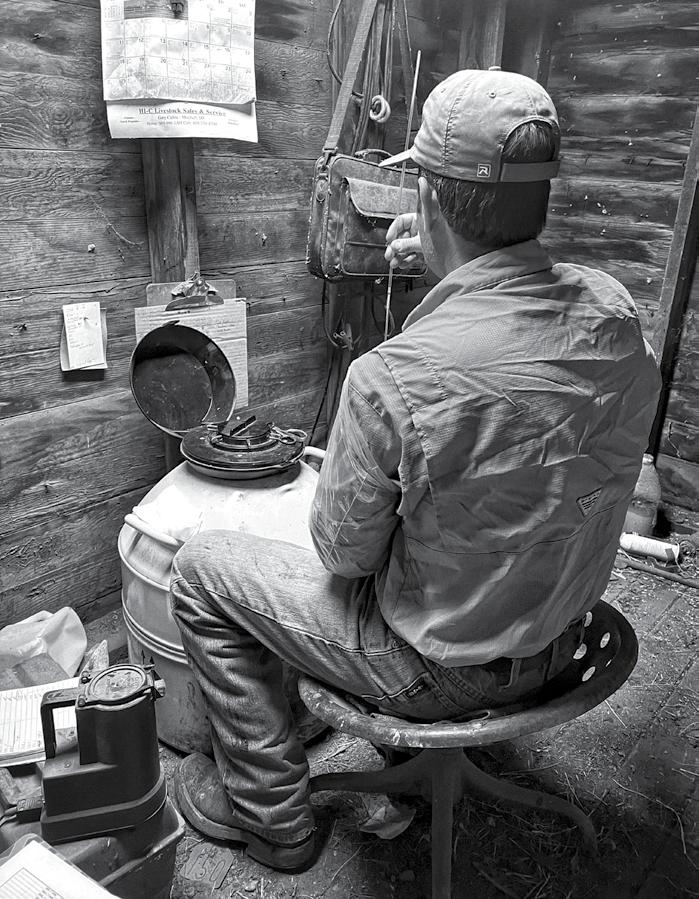

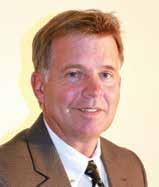
It has been a relief to many throughout the Central and Northern Plains to see timely spring rains return to many parts of the country that were drought stricken the past year. Given liquidation of the nation’s cowherd the past 3-4 years, we are at a point in the cattle cycle where the cow/calf producer will finally be back in the “driver’s seat” so to speak and it’s about time given the increases in production cost. Look for a continuation of rising feeder cattle and calf prices over the next few years as federally inspected slaughter levels will be reduced as non-fed slaughter should begin to decline further. If moisture conditions remain favorable (which they are expected to do as many forecasters expect a return to El Nino conditions) expansion will begin to take place as ranchers look to retain heifers
Wulfs KEYNOTE 4815K
3/27/22 • HB • HP • 60% Lim-Flex
s: LFL Gamer 911G
d: Wulfs Ecarte 7036E
Owned with Wulf Cattle & Keynote Syndicate


Wulfs GENIUS 5293G
3/18/19 • HB • HP • Purebred
s: Wulfs Cobra 2662C
d: Wulfs Charisma 5293C
Owned with Wulf Cattle
Ben Petre (740) 408-2433 • Caleb Miller (614) 218-2043
4490 Township Rd 491 NE, Somerset, OH 43783
to replenish their herds. This is also an opportunity for the seedstock industry to supply superior genetics to commercial cattle producers that can effectively help their bottom line and increase profitability. Limousin and Lim-Flex genetics can be a contributing factor to helping folks accomplish their goals as we move forward.
As we returned from brandings at our participating research ranches this spring, it became obvious to me that Limousin and Lim-Flex bulls used in a commercial Angus or Red Angus set of cows provide many benefits. The obvious of which is superior growth, muscling advantages, performance and weaning weights come sale time. NALF is using three sire contemporary groups consisting of Angus, Limousin and Lim-Flex to breed commercial Angus cows in this project. It was fairly obvious seeing the calves that the heterosis kick will not only be beneficial to the ranches bottom line, but those same benefits will continue as the cattle are shipped to South Dakota State University this fall and go on feed to eventually be harvested on three different shipping dates.
No single breed in the cattle business has all the answers, yet each breed and their members are essential to creating the building blocks for superior genetics that can be effectively used in a crossbreeding program that has dramatic benefits and the ability to add to the bottom line of commercial cow/calf producers. Using high-quality Limousin and Lim-Flex bulls on commercial Angus and Red Angus cows is a perfect example of this. These breeds of cattle are very complimentary to one another when used in a rotational crossbreeding program.
Angus cattle are known for their superior marbling and maternal traits while the Limousin side brings superior muscling, feed efficiency and yield grade which is a win for all sectors of the beef production chain which involve the rancher, feeder, packer, retailer and ultimately the consumer. Pounds are still dollars in all sectors. Using these 2-3 breeds in a crossbreeding program will yield superior weights, superior feed conversion, the ability to still obtain Choice and Prime grading cattle and retain acceptable yield grade on cattle come harvest time. These cattle can also be fed more efficiently to larger outweights without degrading their feed conversion which is a huge factor at the feedyard level.
Our participating research ranchers were rather amazed how much stouter their Limousin and Lim-Flex calves were compared to their continued on page 14
These herd sires represent the quality and performance we strive for. They are proving themselves in production and have the ability to add uniqueness to your program. For semen or progeny, contact owners or Grassroots Genetics 515-965-1458.



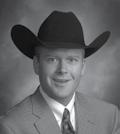



These herd sires are proving to be real assets in our program. They illustrate the kind of conformation, performance and balanced trait selection we strive for. We invite you to come see their calves and the progress we are making in our breeding operation.
Homo Polled / Black • Purebred
COLE Genesis 86G x TMCK Glitz 720G
CE: 12 BW: 1.5 WW: 83 YW: 122 MK: 24
CM: 6 SC: 0.40 DC: 14 YG: -0.32
CW: 29 RE: 0.77 MB: 0.51 $MI: 76
Owned with Tubmill Creek Farms.
Semen available at Grassroots Genetics, 515/965-1458
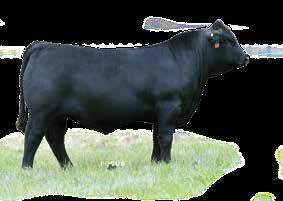
Homo Polled / Red • Purebred
RPY Paynes Cracker 17E x B Bar Foxtrot 32E
CE: 7 BW: 1.4 WW: 68 YW: 103 MK: 28
CM: 2 SC: 1.05 DC: 19 YG: -0.40
CW: 31 RE: 0.81 MB: -0.06 $MI: 52
Co-Owned with Glenndening J Bar J. Contact owners for semen.
Watch for our consignments to the
July 11, 2023
• Rapid City, SD
We welcome all inquiries.
JAMES D. HERR - 17329 S. Nebo Dr. - Versailles, MO 65084 ph: 573/378-0500 - fax: 573/378-5137 - jherr@gvsdis.com www.mistymorninglimousin.com
continued from page 12
straight English counterparts, all while being able to retain their black hided progeny for their feeder cattle offering this fall. While no one doubts there are tremendous cattle in this country that are not black hided, there is no denying the impact of premiums offered for superior grading cattle that are black hided in various Choice and Prime branded programs. This market factor is not likely going away anytime soon as the industry reacts to superior quality grade demands and resulting premiums that are generated from the packer, retailer and consumer.
Improved single-step genetic evaluations that utilize the additions of genomics have greatly benefited seedstock producers across the nation and greatly improved the bull power that is offered to the commercial cattlemen across the nation the past five years. The seedstock producer that is intent on selling superior bulls to be utilized by commercial cow/calf producers who is actually utilizing all the tools that are now available to mate superior cattle has real opportunity to expand their customer base into the future. Your NALF board realizes this fact and is intent on continuing to make sure Limousin has all the tools in their weekly cattle evaluation, herdbook platform, DNA testing and services to help get you there. This is also the reason why the NALF board has moved forward with third party research projects like the one we are currently embarking on to document the facts about utilizing Limousin and Lim-Flex genetics given the changes our breeders have made the last 10 years and exhibit the benefits of using our genetics on a much larger scale to the whole beef industry.
We look forward to seeing many of you in Rapid City in July and are very appreciative of the hard work put in by the South Dakota Limousin breeders as they have invested countless hours and effort in preparing for a great National Junior Limousin Congress and Show at the Monument facility. The annual Limousin junior event would not be possible without our state and regional host each year along with the financial support of our Limousin membership. I would also like to again thank Kiley McKinna and the breeders who have continued to support the Credit for Kids program spearheaded by Kiley. This program has been a key component to assist hosting states in the fundraising efforts each year to put the annual event on. Congratulations also to Mark Smith for his dedicated years of service to the Limousin breed and his upcoming induction into the NALF Hall of Fame this summer. Please join us in Rapid City for his well-deserved induction into the distinguished group of Limousin pioneers!

“Better Genetics for Bigger Gains”
We greatly appreciate your support at our recent production sale. Our cattle being so widely accepted by our peers gives us the confidence that our program is on the right track.

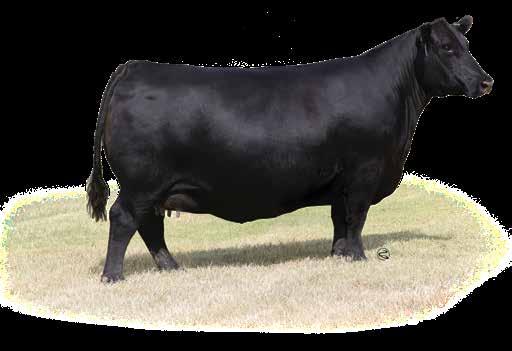
Friday, October 6, 2023

Texas A&M Beef Center • College Station, TX

We are currently making plans for our next sale. It promises to be another great event and we hope you will plan to attend.
Call or stop by anytime you are in the area to get a early preview of our next sale offering.
We look forward to working with these two programs on promoting these great donors. Watch for future progeny in their respective programs.
The North American Limousin Foundation office will be closed Tuesday, July 4 in observance of Independence Day. The NALF office will also be closed on Monday, September 4 for Labor Day. Regular office hours of 7:30 a.m. to 4:00 p.m. Monday through Friday will resume July 5 and September 5.
During the National Junior Limousin Show & Congress, July 7-13, 2023, there will be limited staff in the office. When calling the office to contact a staff member during those days, please leave your name and phone number and staff will get back to you as soon as possible.
The NALF Board of Directors will be having their annual summer meeting August 7-10, 2023. NALF staff will be out of the office and attending the meeting. Staff will answer phone calls and emails as time allows.

The date for interested members to contact the nominating committee is until July 15.
The By-Law updates for the process are listed below.
A. All prospective candidates must express their interest to the Nominating Committee by July 15 each year, and if the committee does not slate those interested persons, supporters then may add their candidates’ names to the ballot via the at-large nomination process. (effective beginning with the 2010-2011 election cycle)
B. To qualify as a member-at-large, the candidate must have at least 15 qualifying signatures from lifetime, founder or active annual members on either the petition-style form available on the NALF website or 15 individual qualifying letters of support from lifetime, founder or active annual members, or a combination thereof to be received in the NALF office no later than September 1.
Nominating Committee: Chairman – Dan Hunt, Curt Wieczorek, Gary Fuchs, Bruce Lawrence, Wade Beckman, Randy Corns, Mat Lewis, Bob Mitchell, Mark Smith
Members are encouraged to log in to their member site on the NALF DigitalBeef platform to review the contact information listed. It is a good practice from time-to-time to look this information over to make sure it is correct and complete. The tabs to review are: Addresses, Phones, Contacts and Associated Herds. Use the edit or delete buttons under the options header on the right-hand side of the screen to change or remove information. To add your website address, click on [edit] in the tan General Profile Information bar in the upper right-hand corner of the screen.
Also, check out the Prefs tab. Under this tab, you may edit your member preferences, such as allowing non-members to see your profile when using the Ranch Search tool, an option to store registration certificates electronically, plus more.
Members will only be required to genomically enhance A.I. sires and donor dams with the 100K panel versus the 150K test. This will be equally effective from a marker standpoint, and will also be cost saving to membership with the 100K genomic panel priced at $57/ hd with free parentage, versus the 150K at $85/hd as in years past. This results in $29/hd savings to membership. To receive an A.I. sire permit, all sires will be required to have the 100K genomic test with parent verification and be free of any defects versus the 150K testing. Contact Alison at alison@nalf.org or Tammy at tammy@nalf.org or at 303-220-1693 with any questions.
As of September 1, 2022, members are required to pay the merchant fee associated with using a credit card for online payment, which is approximately 3.54%. This is standard business practice for credit card bill payments for most businesses today. Members can still pay by check if they wish to avoid the credit card usage fee.
Members that utilize “performance only” for performance data on their cattle will be able to continue to do so, but those cattle no longer receive EPDs beginning September 1, 2022. The NALF board voted unanimously to publish EPDs on registered cattle only. Members utilizing the “performance only” category to record performance data will not receive EPDs on those cattle and must register their cattle accordingly to receive EPD information.
MARK ANDERSON
Executive Director
mark@nalf.org; Ext. 51
Hometown: 55-year resident of Eaton, CO.
Education: B.S. in Animal Science from Colorado State University
Mark’s responsibilities: Organizational leadership and direction; Liaison between the board of directors and staff.
continued on page 18
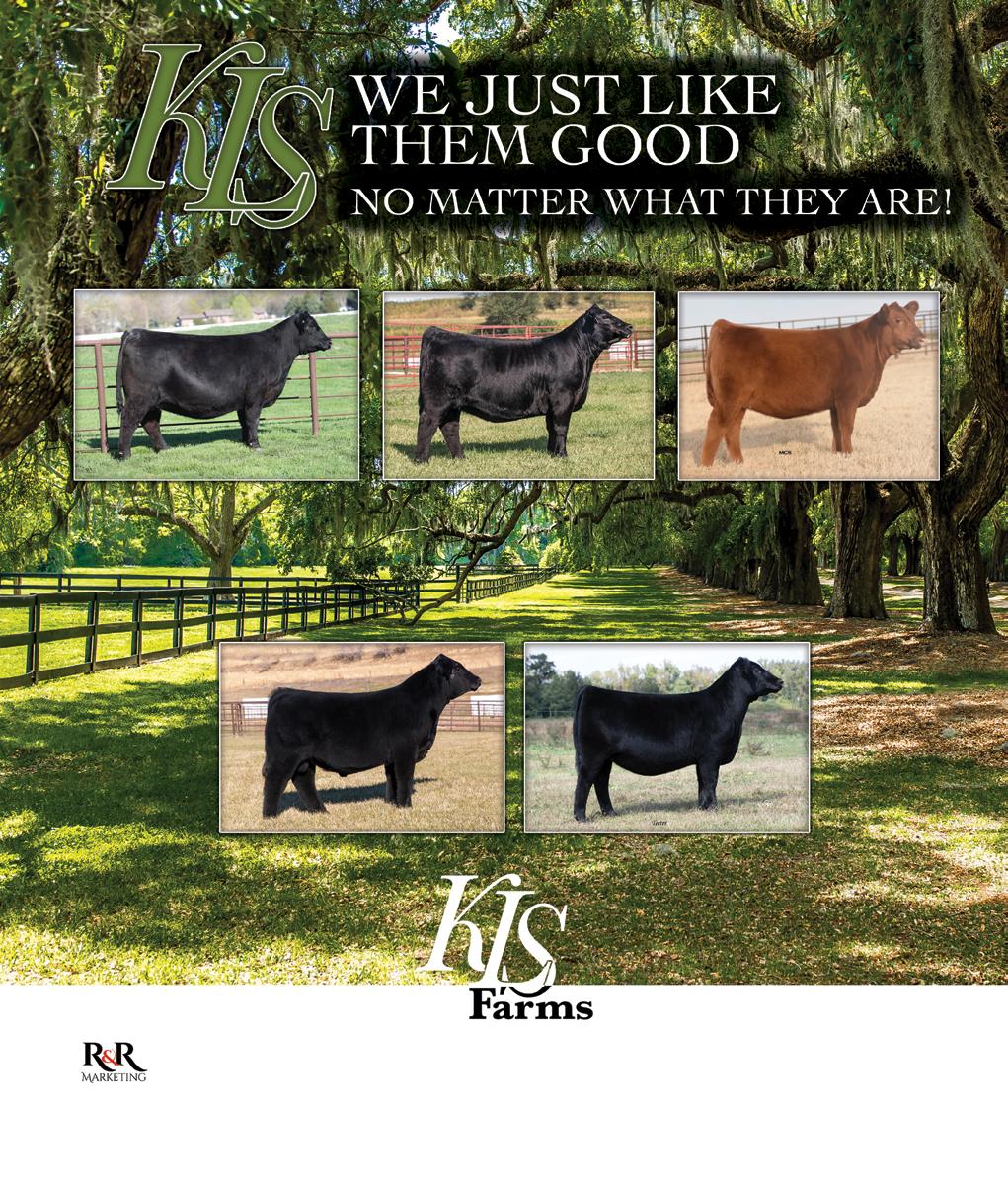
TAMMY ANDERSON
DNA Processing & Accountant Assistant
tammy@nalf.org, Ext. 57
Lives in: Eaton, CO
Education: Attended Colorado State University
Background: Northern Colorado native; 29 years experience working in the accounting and insurance business; Involved with NALF the past seven years.

Tammy’s responsibilities: Accounts receivable for NALF members; DNA sample submissions; Assist with DNA results; Assist with accounts payable.
Director of Media & Activities
mallory@nalf.org or limousinmedia@gmail.com, Ext. 61
Hometown: Princeville, IL
Education: B.S. in Agriculture Communications and Leadership from Illinois State University
Background: Grew up on a farm in rural Illinois; very active in 4-H and FFA; worked for the National Western Stock Show as the open cattle show coordinator. Has worked for NALF the past six years.

Contact Mallory for: NALF communications and press releases; Marketing coordinator; NALF.org website manager and updates; Blog manager; Design services; Limousin Latest e-newsletter; Social
media accounts; State association communications liaison; Sale downloads; Junior programs; NALJA Board of Directors; Summer regional shows; NALF events; American Royal; NAILE; National Western Stock Show; Junior programs; Medal of Excellence points program; Medal of Excellence shows.
Media & Activites Assistant

taylor@nalf.org, Ext. 54
Hometown: Eaton, CO
Education: B.S in Animal Science with focus in Business from Oklahoma State University
Background: Family runs a Maine-Anjou breeding operation; showed competitively around the nation; served on a breed association’s junior board; worked at the Tulsa State Fair as an agribusiness event coordinator.

Taylor’s responsibilities: Assist the Director of Media & Activities; NALF communications and press releases; NALF.org website editor and updates; Blog contributor; Limousin Latest e-newsletter; Social media accounts; State association communications liaison; Sale downloads; Summer regional shows; NALF events; American Royal; NAILE; National Western Stock Show; Medal of Excellence points program.
Director of DNA Processing & Accounting Operations
alison@nalf.org, Ext. 59
Location: Grew up in Vancouver, WA. Moved to Colorado in 2007
Education: B.S. in Animal Science, minor in Business Administration from Colorado State University
Background: Grew up around horses; Always loved cattle but never showed; Judged a little at CSU; Worked at the CSU vet hospital in the food animal and equine barn.
Contact Alison for: Paying your NALF bill; Membership questions; Bill discrepancies; Request statements; All DNA services; LIMS program; Herd EPD downloads; International import/export paperwork.


Registry & Member Services Specialist
steph@nalf.org, Ext. 27
Lives in: Highlands Ranch, CO
Education: Office Specialist Degree
Background: Grew up on family ranch in Nebraska; 28 years of experience working with breed associations and their breeders. Stephanie is your go-to person for: Registering natural and foreign animals; Recording weaning and yearling weights; Transfers of live animals and embryos; Bull and cow leases; New memberships; NALF-DigitalBeef Member Site questions; Ultrasound results and Barn sheets; Mailing certificates, supplies, and promotional material.

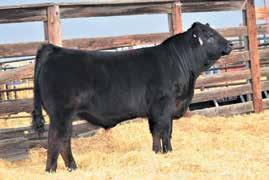



The purpose of NALJA is to develop knowledgeable, motivated beef industry leaders, while promoting the Limousin breed through fellowship, leadership and education.
The initial cost of a junior membership is $50. This fee activates the Junior membership for the current year and the following calendar year. After this time, Junior members pay a $50/year activity fee to qualify for active member rates and to show at NALF and NALJA sponsored events.
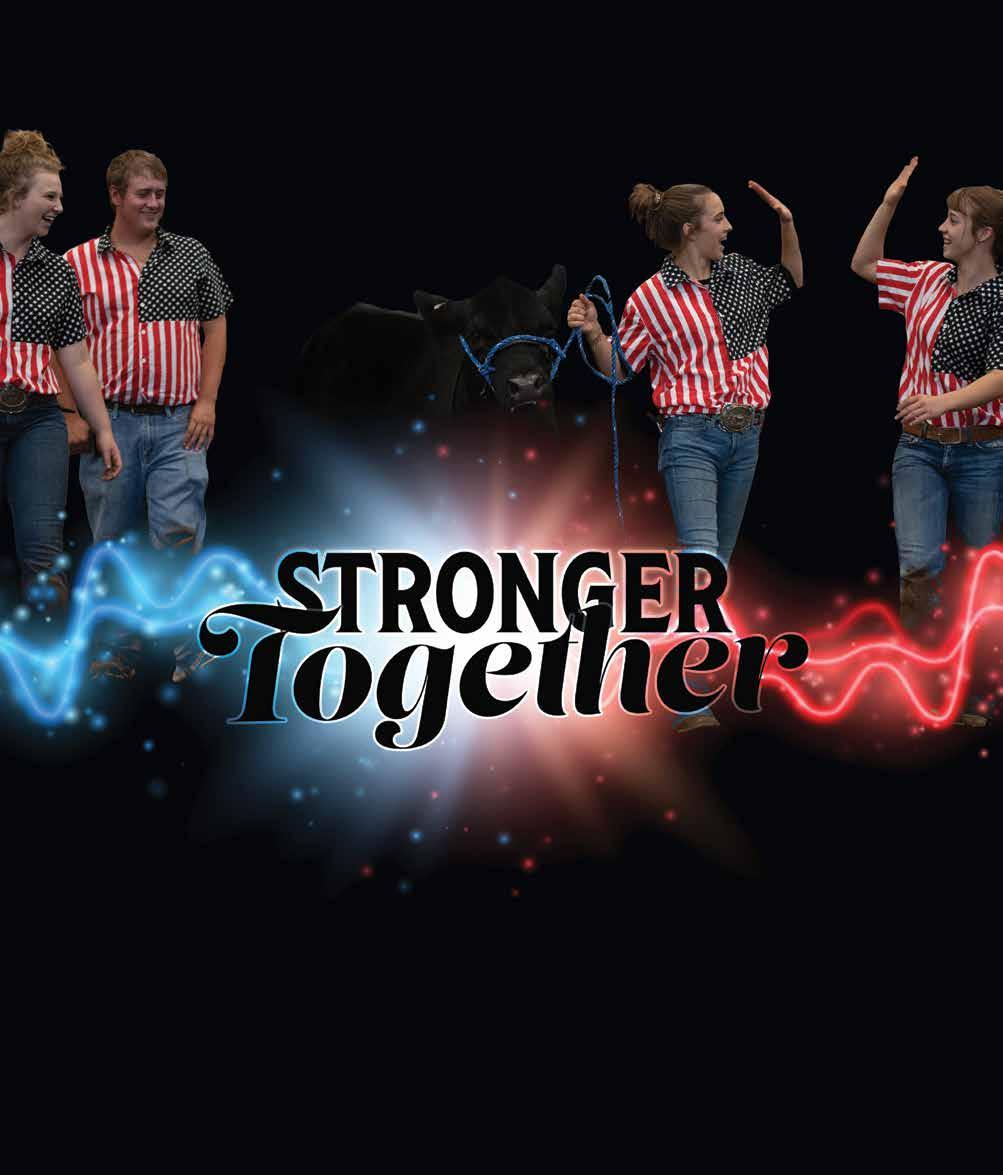

As we travel the highways and by-ways of the Limousin family and breed we often cuss and discuss the cattle business, sports, politics, great cheeseburgers and most of the time, the promotion and marketing of Limousin cattle.
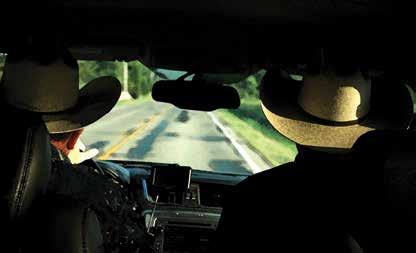
Through “Riding Shotgun” we invite you to join us in the righthand seat, so that we can let you in on what we find to be our marketing pet peeves, shortcuts and some of the favorite habits of top-flight professional producers. Grab a cup of coffee and take the ‘shotgun seat’—we are pleased to have you riding along.
else? Your board is in the middle of a real-world study that will give you lots of answers and probably open up some new questions. If you are one of those breeders who have no idea from day-to-day what 600-pound steers are bringing, I challenge you to broaden your education. If you are a cowboy who doesn’t understand the show barn and the benefits of youth and livestock, I would suggest you also broaden your horizons and realize a lot of good comes from the learning experience of a youngster and a four-legged critter. The Limousin breed is made up of people with a multitude of interests and desires, the common denominator is the breed—Limousin.
It is indeed an interesting time to be in animal agriculture—600pound steers are bringing close to $3.00 a pound, our product is in demand by consumers everywhere and in my opinion, the Limousin breed has put together a genetic profile that will continue to make the breed a viable option for commercial cattlemen everywhere. Limousin genetics are entering supply channels through dairy beef crosses and through the normal commercial beef industry. These genetics are adding to the protein profile and even though we don’t always get the credit we deserve; I think we should be proud of the fact we have adapted to the market while keeping our traditional efficiency and thickness.
As we go forward, I think we need to look at our hole card; what do we offer to the beef business; and what do we do better than anyone
As a final thought, I think we should all consider that we are lucky to live in a country where we have the choices and freedom to raise what we like and invest in what we desire. Never forget that the freedom to make those decisions is one thing—it doesn’t mean you won’t have to live with the consequences of your decisions. Be PROFESSIONAL, do your paperwork, pay your bills and back your product. LEARN THINGS, the world of agriculture is a noble avocation. Enjoy yourself everyday. See you down the road.
email: grgenetics@aol.com • phone: 515-229-5227

With the recent acquisition of the entire Magness Land & Cattle Co. cow herd, Rafter DP Farm & Ranch has entered a new era. Pages of history have been written by cattle carrying the MAGS prefix, and when combined with our already impressive cow herd, the potential for our program to reach a higher level has never been greater. We are excited about our future in the Limousin business and invite you to become a part of it.
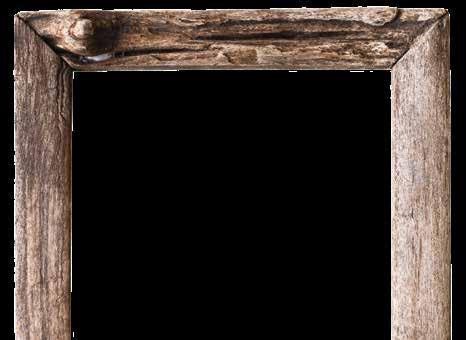

RAFTER DP FAMILY
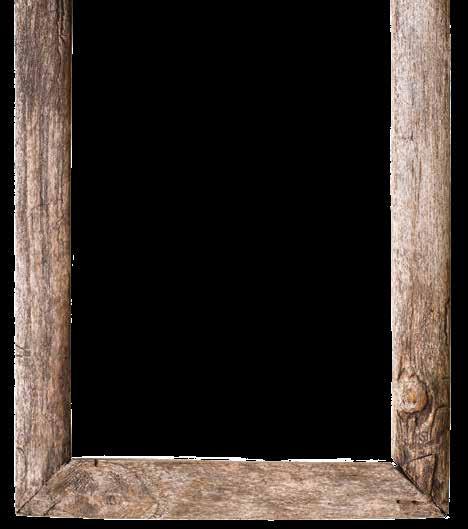




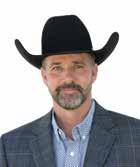


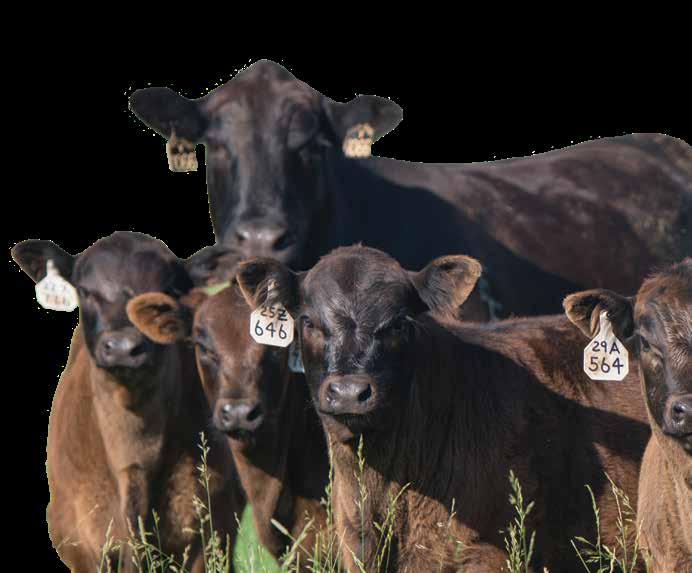
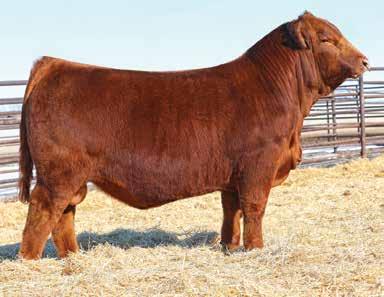
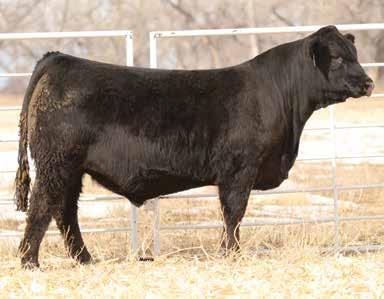
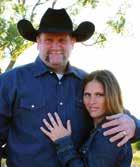

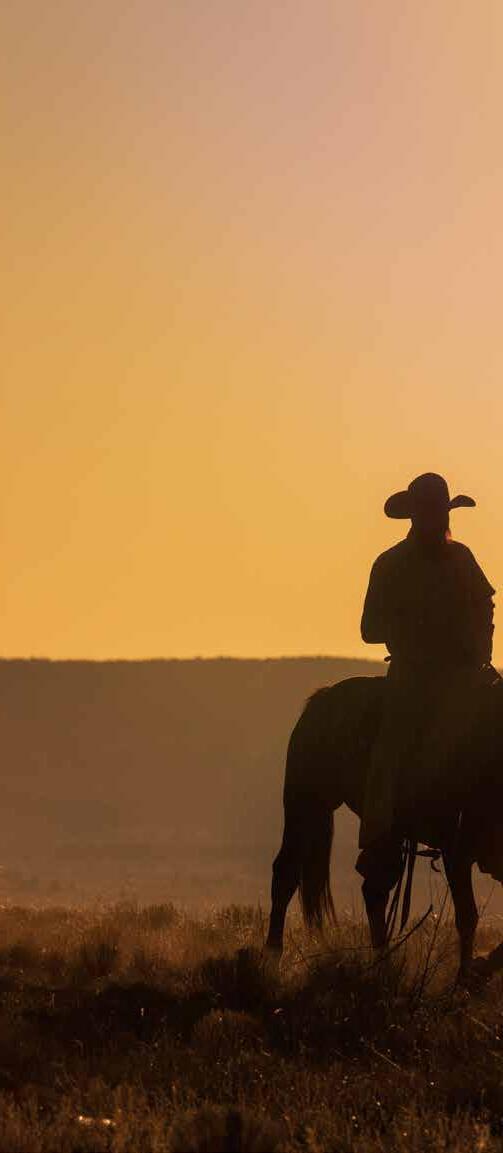

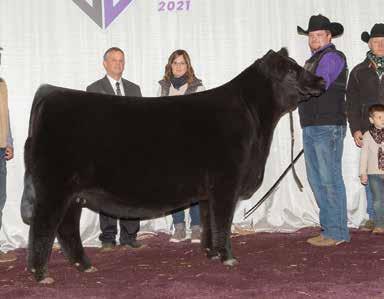
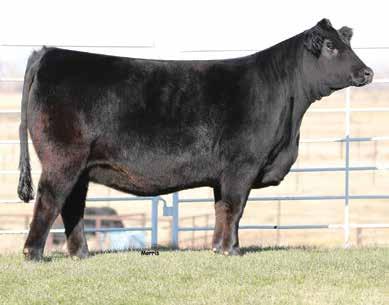

“Ashoe is just a shoe until somebody steps into it. Then it has meaning. The rest of us just want a chance to touch that greatness. We need you in these shoes not so you have meaning in your life, but so we have meaning in ours.

Everyone at this table will be forgotten as soon as our time here is up—except for you. You are going to be remembered forever because some things are eternal.” (Quote from the motion picture “Air”)
Those are words said to Michael Jordan, the greatest basketball player of our time, and his parents, while in the initial meeting with the Nike team, prior to signing the biggest deal of his life.
While watching this story, it reminded me so much of similar things that happen in the seedstock business. The shoe to the Nike brand was nothing until Michael Jordan stepped into it. A herd sire or elite female could be just another animal, until someone promotes it. Kudos to all the great breeders out there for what they produce and the level in which they have marketed their product.
In some cases, the calves may be great but only until they are
promoted correctly does someone look at them in a different light! The power of promotion and the ability to take an animal to a new level in other people’s minds is crucial to success. It is what we make of it and the perception that is created. In terms of a competitive player, no matter the sport, promotion is a powerful tool to communicate ourselves and our “cause” to make it the best it can be.
In the words of Ted Turner, “Early to bed, early to rise, work like hell and advertise.”
As they say, all good things must come to an end. It is with mixed emotions and a great deal of optimism that we announce the sale of the entire storied Magness cow herd to our friends in Oklahoma, Rafter DP Farm & Ranch. It has been a great run and we would like to thank each and every customer for the confidence they have shown in our genetics. It’s been a memorable ride and we appreciate your support of the legacy we were able to establish.

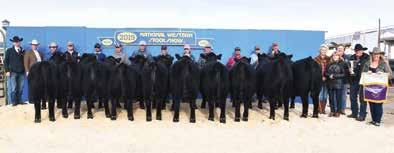
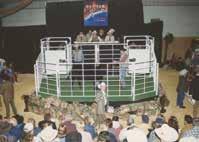
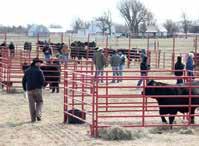

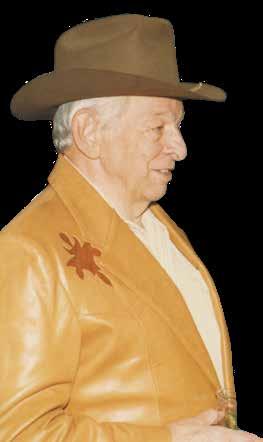

Platteville, Colorado
GARY MAGNESS, OWNER Office, 970-785-6170
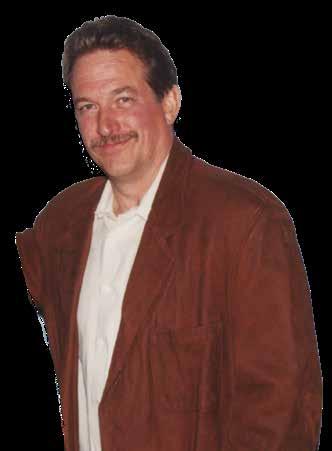

John Pence, 970-396-3584
Austin Gottschalk, 970-396-0115
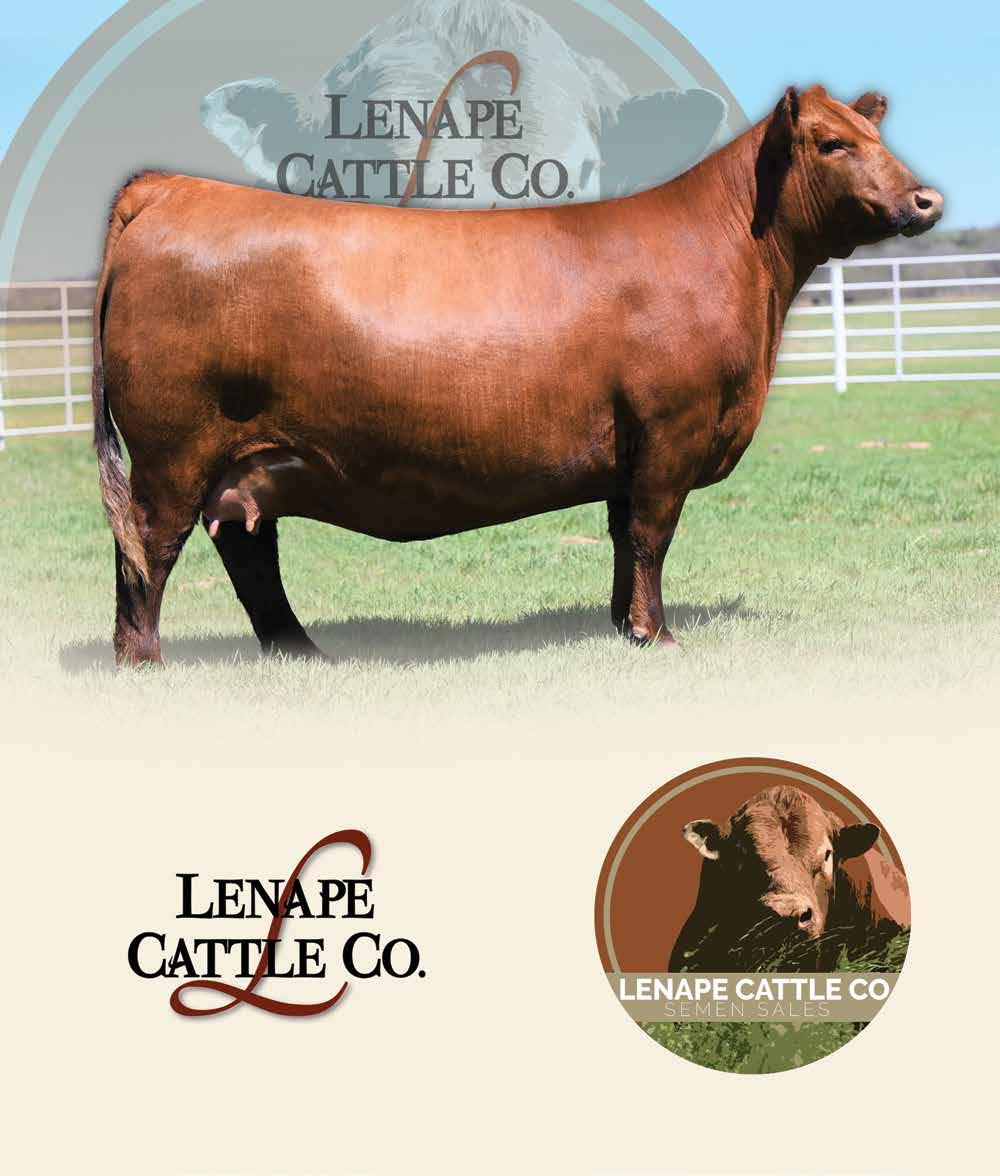
Gary & Susan Fuchs • Stephen, Nathan & Emily P.O. Box 81 • Cameron, Texas 76520 254/482-0611 • garyfuchs53@yahoo.com


Stephen Fuchs, manager • 254/482-0052 fuchslimousin@gmail.com • www.fuchslimousin.com
WZRK JACK BLACK 9048J 82% Limousin • Homo Polled • Black Wulfs Gallagher 7056G x WZRK 9048G CE: 15 BW: -1.6 WW: 69 YW: 97 MK: 23 CM: 9 SC: 0.80 DC: 14 YG: -0.26 CW: 43 RE: 0.97 MB: 0.21 $MI: 60
Jack Black is handling a majority of the herd sire duties within our program as he illustrates much of what our herd is built upon. We have never been fans of single trait selection but rather a balance of economically important traits that positively affect our customers’ bottom lines. Jack Black does exactly that. Semen is available through Grassroots Genetics, 515-965-1458.
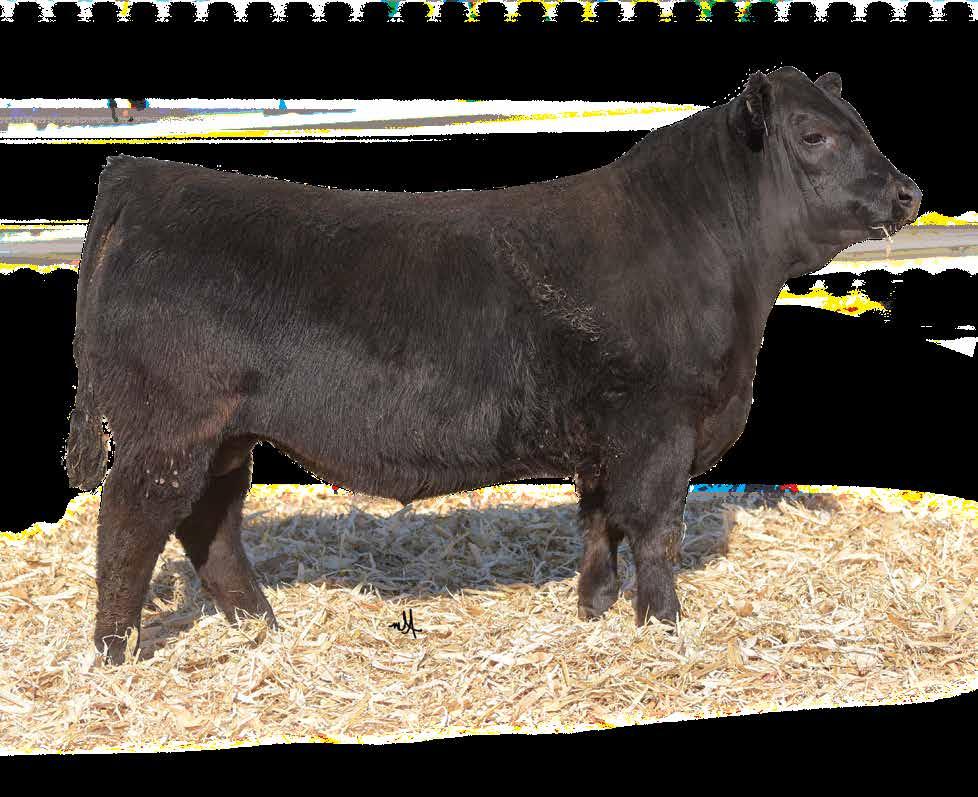


Mark Smith has made a career out of picking up new skills and adapting to changing environments while staying loyal to the breed and always emphasizing the people side of the cattle business. It’s earned him induction into the Limousin Hall of Fame.
continued on page 32
In terms of his work at ringside, the number of Limousin animals Mark Smith has helped sell will likely never be counted, but he has always handled himself in a professional manner while representing breeders from across the country.
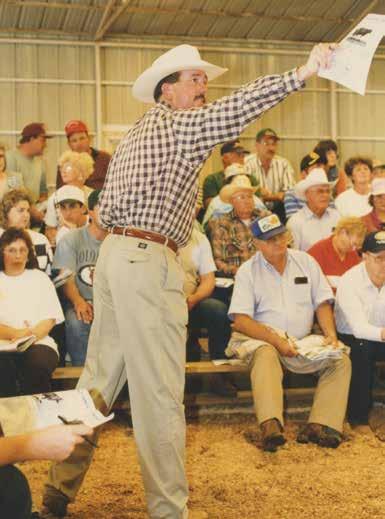
It takes a special person to make a career out of being an advertising salesman in the registered cattle business, just as it takes a certain skill set to be a successful breeder, sale manager, field representative, breed association employee, board member and even board president. Mark Smith has mastered all those things and more, including insurance salesman, order buyer, photographer, ringman, semen salesman, videographer and, most importantly, long-time friend and advisor to many in the Limousin breed.
There are a ton of folks in the seedstock business who have managed a limited stint in any one of the above endeavors. It’s truly unheard of for one person to have not just taken on those many and varied roles, but to have succeeded in them to the degree that his peers honor him with their breed’s most prestigious recognition. “Smitty,” as many know him, will be inducted in the North American Limousin Foundation’s Hall of Fame in Rapid City, South Dakota, July 11, during the National Junior Limousin Show and Congress.
Smith grew up in Jefferson City, in central Missouri, and spent his youth working with his uncle and cousin who had the livestock in the family. When he went away to college at the University of Missouri, his ambition was to become a veterinarian—just like the other 495 out of 500 students in his first animal science class who raised their hands when asked by the professor who was pre-vet in the class.
Quickly realizing the need for a plan B, Smith met with his college advisor right after that first class. That advisor was Greg Martin, a
man who would become his livestock judging team coach at Mizzou and, later, his gateway to a career in both livestock publications and the Limousin breed. Martin told Smith about the university’s new ag journalism program, which made sense to a kid who had been in journalism in high school. But he was still interested in animal science, too, so Smith stuck with that department but also added ag journalism to his degree plan.
“From the beginning, Mark was very curious,” says Martin, “He asked a lot of questions and wanted to understand why. He picked things up very quickly and has been a lifelong learner. He also had a good eye for livestock.”
Martin left Mizzou in the fall of 1977 to take a job in Denver as executive vice president of the North American Limousin Foundation. Cut to a few years later, when Smith is done with college and looking for a job – preferably somewhere in cow country. At that time, the NALF offices were in the same building as the Record Stockman, a prominent weekly livestock newspaper. Though he’d been offered a job with Drovers in Illinois, Smith really wanted to get out West. At the same time, Bill Angel at the Record Stockman was looking for a new field rep to cover Nebraska, South Dakota and Kansas. Martin put a word in for Smith and he got the job, which meant a move to North Platte, Nebraska. He was thrilled—at least until his first day calling on customers near Rapid City, South Dakota.
continued on page 34
“From the beginning, Mark was very curious. He asked a lot of questions and asked why.”
Since 1971, when the first Limousin sired calves hit the ground at our operation, we have been dedicated to producing elite Limousin Seedstock for our customers. We are proud that our cattle can be found in top herds across North America and for our reputation of superior customer service. Come see a program dedicated to providing genetics that will improve your bottom line.
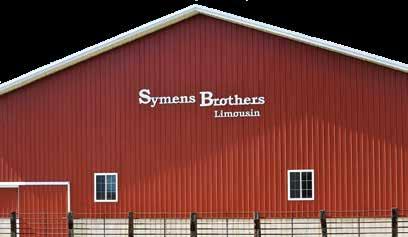
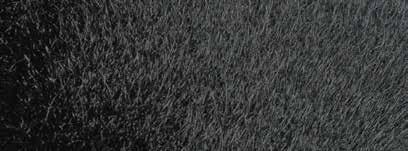


FEBRUARY 22, 2024
Your visit is always welcome!

Mark Smith will be the first one to tell you, that although cattle are what brings us together, it’s the people side of the business that is most important. He is shown here with good friend Bob Minerich.
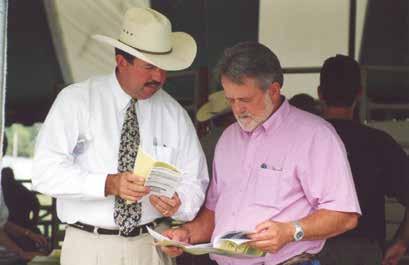
“They said, ‘here are some guys you need to call on, they’re advertisers having bull sales,’” Smith explained. “The first two places that I called on—I got thrown out because I was from the Record Stockman Apparently, the guy who’d been there before me was kind of running ads bigger than they authorized and sending them a bill. Both Greg and Bill had told me if I got into any trouble around Rapid City to call Charlie McPeak, who was an ag extension guy there at that time.
Graduated from Mizzou, 1978
Record Stockman, 1979-1980
International Limousin Journal, 1980-1983
American Cattle Services, 1983-1987
NALF, 1987-1990
LIMI-Gene, 1991-2000
Married Deidre Grimsrud, 1992
NALF Board Member, 1994-2000
NALF President, 1999-2000
Grassroots Genetics, 2000-present
Inducted Into Livestock Marketeers Hall of Fame, 2018
Inducted Into NALF Hall of Fame, 2023
“So, I had a beer with Charlie and asked him what to do,” he added. “He said, ‘Well, I can tell the guy you’re selling behind has never been on a Simmental, Limousin or Charolais place in his life because he was a Hereford guy. If you want to go somewhere you’ll be safe, go to those places.’ We went back to his office and he gave me copies of the Simmental Shield, International Limousin Journal and the Charolais Banner magazines and I sat down with them to map out a new list of clientele.”
It worked. For a few years Smith was selling ads and earning his keep as a hungry, young man who worked on straight commission, running the roads. Then his connection with Martin brought about a new opportunity. In 1981, Bob Crook offered Smith a job with the magazine he had just purchased—the International Limousin Journal.
“I thought, well I like Limousin cattle and really like the idea of a deadline once a month instead of every week,” Smith says. “It was all different then, you were still writing copy and we didn’t have fax machines or any of that stuff. It was all hand-to-hand and a lot of telephone work. The breed guy was more of a sales manager than an ad salesman because the ads kind of sold themselves and you helped them with their whole thing. I liked that a lot better; working with guys one-on-one instead of trying to sell ads to every Tom, Dick and Harry.”
He took the job but still had one last big issue to sell for Record Stockman before starting the new gig. Smith called on Bob Yackley, one of his favorite breeders to go see who happened to be in the Limousin business. Yackley didn’t know about the job change yet, so he gave Smith the quickie version of the ranch tour, said he didn’t need an ad that issue and that was that—until Smith told him he’d be seeing a lot more of him.
“I told him it wasn’t public yet, but I was going to be his new Limousin field man,” Smith explains. “He said, ‘What? Get back in the truck.’ I left two days later after seeing everything on the ranch. Bob was a lot of help to me through the years. I left there and went to Herman Symens’ and had kind of the same reaction there. So, I ended up being a Limousin field man for three years. That also brought me into close contact with Bruce Brooks and Ken Holloway.
“As they were ramping up American Cattle Services, a lot of the northern guys were my clients for Limousin, so one day Holloway put me in a corner like only he could do and told me it was time to quit selling ads and that I needed to become a sale manager. So, I went to work with Holloway and partnered with him and Bruce Brooks and learned a ton in a short amount of time. For a while, we were managing a hundred sales a year. We were just awful busy and eventually I got to where I didn’t like flying around in the airplane so much.”
At this time, the Limousin publication had been sold to a new owner and it wasn’t going well. The association was worried they might need to take it over and Martin approached Smith about hiring him at NALF to be ready to take on the magazine in case the worst happened. Plus, he needed someone to take over some travel for the association—someone to go to the shows, do some advertising and be the resident journalist. So, Smith joined the association in the Denver office.
“From the beginning, as he was around all of these breeders, Mark picked up a lot of knowledge and was able to sort out what made sense and what didn’t,” Martin explains. “All along his career, he picked up
a lot of stuff to put in his knowledge bag and that helped him later on to become a consultant. Plus, he really is a people person, even though you wouldn’t have seen that in him when he was a quiet college kid. He just has a special ability to communicate and connect with all different types of people.”
Eventually, Martin took a different position that required less traveling. And then Herman Symens offered Smith a position as director of Symens Brothers’ marketing program.
“They were doing all kinds of things in the beef business and they wanted to start a semen company,” Smith says. “So, I went with Symens Brothers and we started LIMI-Gene and the rest is not-so-ancient history. Herman and I split up just due to the growth of things and I started Grassroots Genetics, a Limousin semen sales and herd consulting company in 1990. And we sell livestock mortality insurance.”
continued on page 36
It’s impossible to know how many miles Mark Smith has traveled, how many sales he has worked, how many hands he has shaken or how many pounds of sale day brisket he has eaten, but if such records were kept, he’d be near the top of the leaderboard.
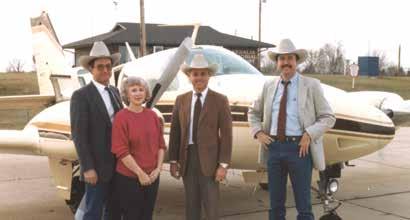
Brian, Kathy & Amanda Duplaga
Bryan & Jessica Doehr
18759 Indian Hollow • Grafton, Ohio 44044 Jessica: 440.371.4396 • Brian: 440.371.4221 duplaga@windstream.net

2/14/22 • Red • Homo Pld • Purebred sire: Wulfs Gallagher 7056G dam: WZRK 0038H
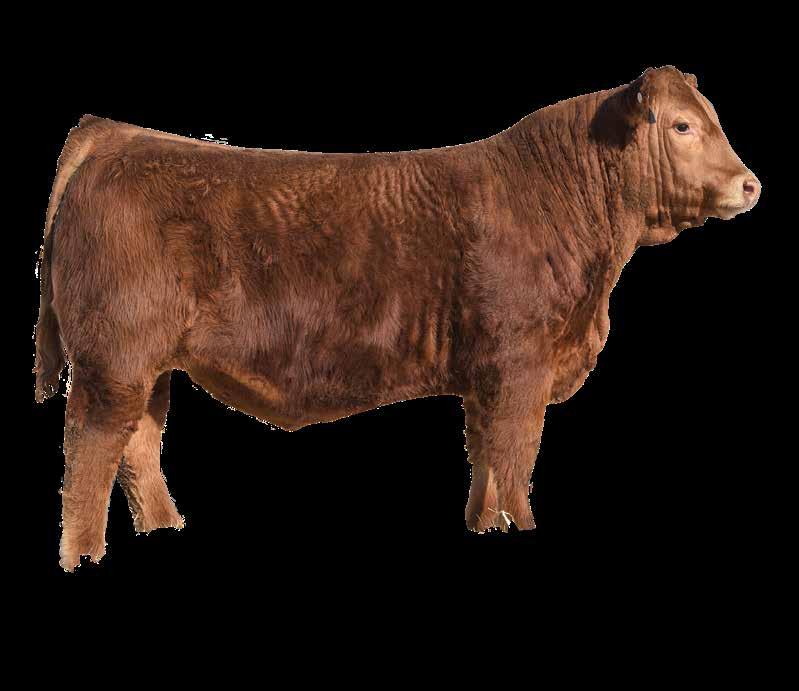
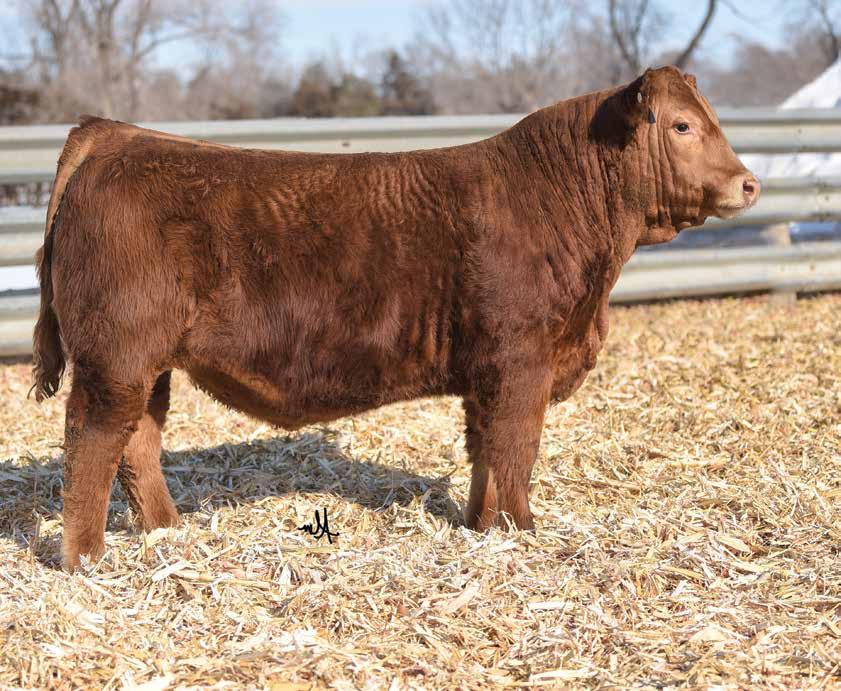
CE: 15 BW: -2.1 WW: 70 YW: 100 MK: 30 CM: 9 SC: 0.93 DC: 15 YG: -0.31 CW: 45 RE: 0.81 MB: 0.22 $MI: 61
WZRK Kalua had everyone talking at the Wieczorek Bull Sale. This tremendous son of Wulfs Gallagher is the next step in calving-ease with extreme marbling in a PUREBRED package. Kalua has all the tools—top 2% rank for marbling, a negative birthweight and tremendous phenotype, HOMO Polled, PUREBRED, maternal and tame. If you want to start making cattle that fit the future, here is your man. Owned with Wieczorek Limousin.
Semen Available through (515)965.1458

continued from page 35
In 2022, Smith semi-retired to spend more time at home with his wife, Deidre, in Ankeny, Iowa. Make no mistake, however, while he may have slowed down he isn’t done with the breed that he’s been such a big part of for more than 40 years now. Like rodeo or horse racing, once a breed is in your blood, it’s there to stay—particularly in a breed like Limousin that’s comprised of a uniquely tight bunch of folks.
Texas Limousin breeder Hiram Begert has been friends with Smith for more than 40 years and served on the NALF board with him in the 1990s. “He has been a driving force in the breed,” Begert says. “He has honesty, integrity, the man knows cattle and he has good business sense. A lot of people look to him for advice and he will tell you exactly what he thinks. He has helped us buy bulls for years and they’re always what he says they will be. He’s just tops in our minds for everything.”
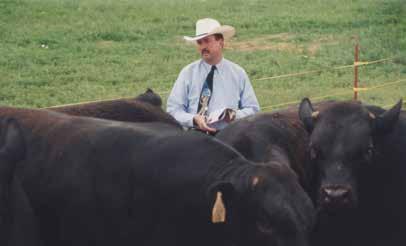
Smith says while he got into the Limousin business because of his early associations with folks like Martin, Yackley and Symens, he stayed in it because he really does like the cattle. He is a true believer that as the population grows and there are more mouths to
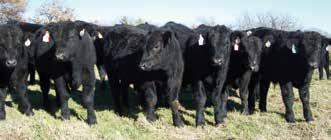
www.limflex.com.

feed with increasing emphasis on green environmental initiatives, the efficiency Limousin brings to the table is going to be even more important for the beef industry.
“That’s what I see coming down the road and that’s why I think Limousin has a good future,” he adds. “You can only promote what you faithfully believe in.”
That said, Smith also says the registered cattle business is not really about the cattle business— it’s a people business at heart.
“Cattle are involved, but that’s not what it’s about,” he explains. “The people in the registered business want to do something different than just raise protein. Some of that is ego. Some of it is a desire to work with the genetics. A lot of it is tradition, and people like being involved in that, but I think all the breeds would tell you what makes them different is their people. Limousin certainly has a very strong set of not only thinkers, but nice, friendly people.”
Registered cattle sales have come a long way from the days when Smith says the golden rule was that 80% of your buyers at your sale would come from a radius of 60 miles from home. With the advent of online cattle sales and the shipping of frozen genetics, customers can come from literally all over the country. And without the burden of having to have enough cattle in your sale to cover the gross fixed costs of a traditional in-person auction, smaller producers can now host an online sale with competitive price discovery whenever it’s convenient for them.
Even so, Smith says it’s more important than ever to keep a personal touch with your customers if you want to stay in business.
“If you think you’re going to only be on the internet and not follow up with your customers, like a Wal-Mart type of situation, you’re going to have maybe two online sales and then you’ll be done,” he adds. “You have to get on the phone, you have to shake hands when you can, ask how the cattle worked for the customer. You have to do more customer service than you did before when he walked into your yard and you fed him lunch. If you want to be successful, you have to establish personal customer service. Otherwise, the buyer can turn off his internet in a second. And then you’re like me that first sales trip—out the door.”
Also, the power of networking cannot be underestimated. You might see a high-dollar heifer sold in an online sale, perhaps sightunseen and wonder how that happens. Smith points out someone that buyer knows and trusts, somewhere along the line, did see that animal and shared what they thought. He cites a personal example of having a steer to sell that he texted a photo of to a friend who wasn’t in the market. Before long he got calls from strangers all over the country who were in the market for such a steer and had seen the photo from a friend of a friend.
continued on page 38
When it comes to buying cattle on order or suggesting which AI sires to employ, Smith developed a reputation as one of the most trusted eyes in the business. Breeding-age bulls and females for sale at all times. Reasonably priced on a first come, first served basis.A special thank you to Linhart Limousin of Leon, Iowa, for purchasing half embryo interest in this legendary producer. The impact she is making on the breed is undisputed when you look at her impressive production record with an array of different sires. We look forward to working with the Linhart family and appreciate their confidence in this proven donor.
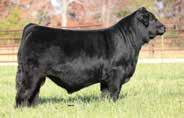
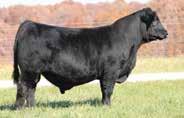



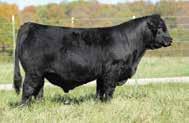
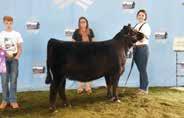
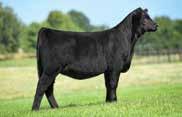
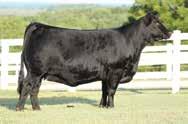

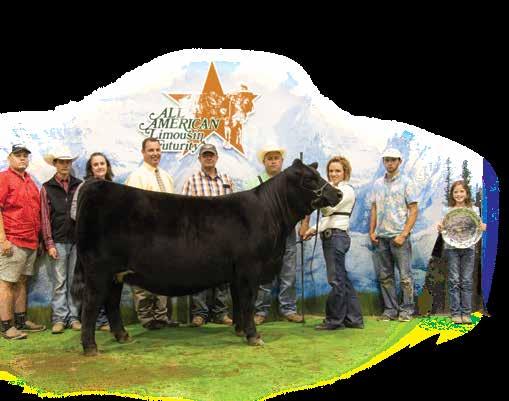

We have been raising purebred Limousin cattle that work in the real world for real cattlemen since 1987. Our cattle have moderate birthweights and great growth, along with maternal and carcass traits.

continued from page 36
And the network is not just about cattle, of course. Anyone wanting to get a start in the cattle business needs to know someone is always watching them.
“There is a loose camaraderie in the business that knows who can get a job done and who can’t,” Smith advises. “They know who a young talent is to watch and then all of a sudden there is an opening for them. People would be amazed at the phone calls that go on behind the scenes. People are always paying attention to who the good, young talent is and they are not afraid to pass that along. I would tell young people out there, always put your best face forward because you don’t know who is watching all the time.”
He also firmly believes the world of agriculture is wide open to anyone willing to work hard, get their hands dirty and learn on their feet.
“But you gotta really want it; you can’t just have it,” Smith adds. “If you’re truly interested in animal agriculture, find what you like, pick your spot and you’ll be like me—you’ll never have to work a day in your life. The only time I ever felt like I was working was the travel.”
ABOUT THE AUTHOR: Sharla Ishmael is a veteran agricultural writer from Benbrook, Texas.

In 2022, Mark changed his business plan. The desire to spend more time with his wife De, led him to take down his “bid spotter” shingle and devote more time to Grassroots Genetics & Consulting and Grassroots Insurance.

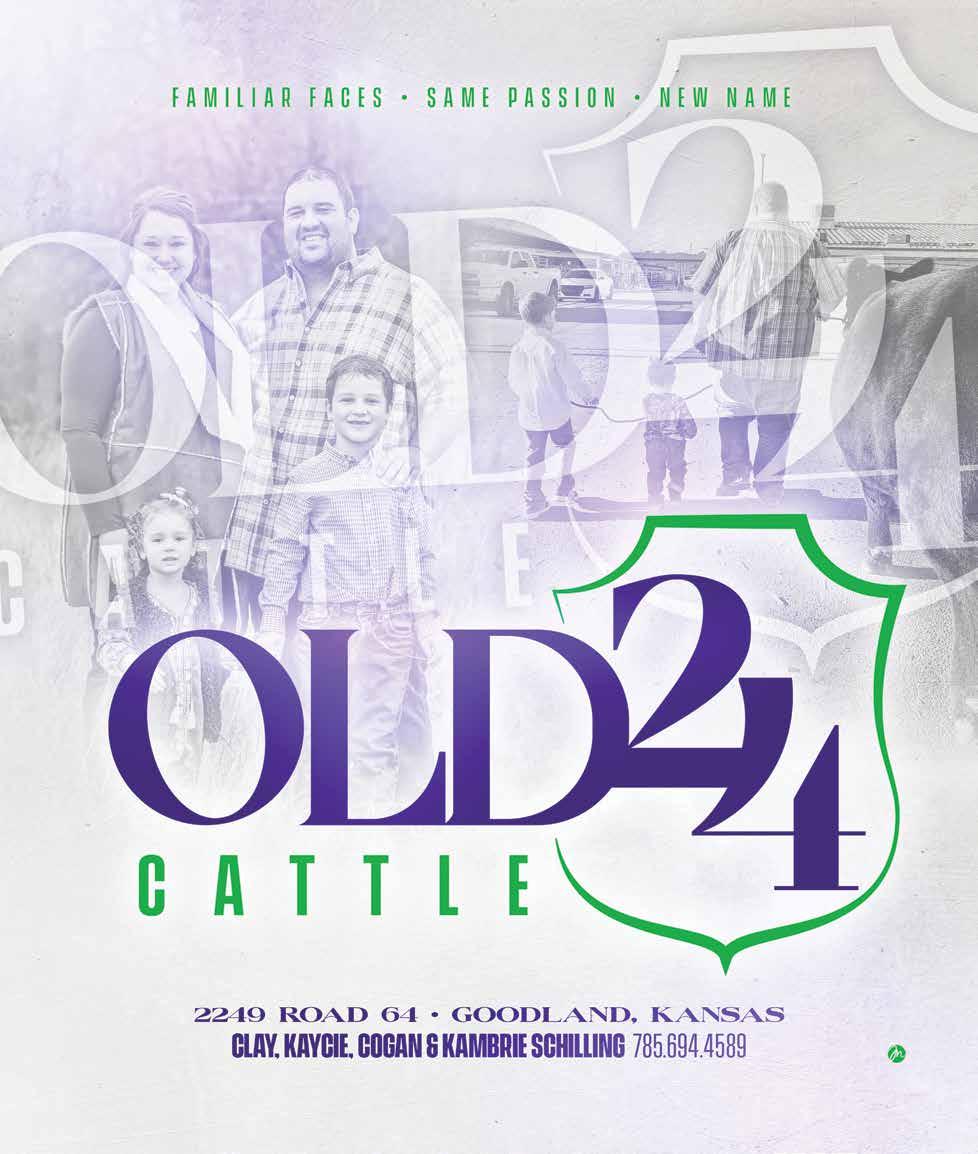
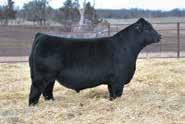
from K-State Research and Extension news service
Not only do hot summer days make people uncomfortable outdoors, it can also impact livestock.

K-State Research and Extension beef veterinarian A.J. Tarpoff said temperature, humidity, wind speed and solar radiation all affect cattle. Not only do producers need to watch daytime temperatures, Tarpoff said nighttime temperatures are just as important in preventing heat stress.
“They really need about six hours of nighttime cooling to dissipate the heat load they accumulated during the day,” Tarpoff said.


A forecasting tool Tarpoff recommends is the Mesonet.
To minimize the amount of heat stress on the cattle, Tarpoff advises producers to finish all processing or handling work with cattle before 10 a.m. on hot days, and potentially to push feeding times to later in the evening.
“When we feed cattle, they will actually increase their heat load just from digestion for the next four to six hours,” Tarpoff said.

He also recommends reducing the stocking load, which increases spacing and allows for better air circulation and easier access to water.
“During the summer months we want to increase wind speed as much as we can just to be able to dissipate some of that heat load,” he said.
Another strategy that Tarpoff recommends is providing cattle bedding and shade so that animals have a cool place to lay.“ Cattle have an immense shade seeking behavior,” he said.
Tarpoff said water misters should only be used in the morning and evening for evaporative cooling of the pen surface.
“We don’t wet the cattle to cool them during the heat of the day,” he said. “That can be disastrous because we can actually increase the humidity at the pen level at that time of day.”


Cattle worldwide face major health threats from a highly infectious viral disease that decades of vaccinations and other precautions have failed to contain. Federal, private-sector and Husker scientists are collaborating on a new line of defense, by producing a gene-edited calf resistant to the virus.
If follow-up research confirms its efficacy, the gene-editing approach offers long-term potential to reduce antimicrobial and antibiotic use in the cattle industry.
The bovine viral diarrhea virus devastates the bovine immune system and can cause severe respiratory and intestinal harm to infected beef and dairy cattle, said veterinary epidemiologist Brian Vander Ley, an associate professor in the University of Nebraska–Lincoln’s School of Veterinary Medicine and Biomedical Sciences.
continued on page 44
SHSK Mufasa, Legacy’s Hulk and TASF Hole In One semen is now available at Cattle Visions — (573)641-5270. We are excited about our Hulk calves as well as the rest of our spring crop! Bulls and Females for sale at all times, call with inquiries!
18241 Irving Rd., Witt, IL 62094
Jordan & Randee Ruppert • (217)827-2564
Joan Meyer • (217)825-9979
EXCLUSIVE POSITIONS—annually
Association, Youth, Commercial, Events, Online-Contact for Pricing
PREMIER PROMOTION POSITIONS—annually
Featured Ads, Catalogs, Breeder Directory-Contact for Pricing
FEATURED AD LISTING—$750 per 30 day-cycle
SALE CATALOG LISTING—30 day-cycle
$250 if accompanied by Featured Ad or Premier Spot • $1,000—Stand Alone
BREEDER DIRECTORY LISTING—$450 annually
Business Card Ads
BULL PEN SIRE DIRECTORY—$835

Four Month Placement
eBlast SERVICES—$195 per blast
eBlast PREFERRED POSITIONS—Contact for Pricing
ONLINE SALE HOSTING Contact for Pricing
4-Time Contract Print Ad Discount - 5%
Annual Contract Digital/Print Discount - 15%
NORTH REGION
Sarah Johnson 614/266-2646
Sarah@limousin365.com
SOUTH REGION
DeRon Heldermon 405/850-5102
deron@limousin365.com
Mary Spencer 308-627-8149
Edward Spencer 308-440-1139
Mark Blake 712-269-1361 www.j6farms.com
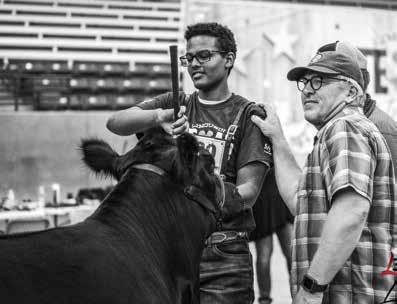
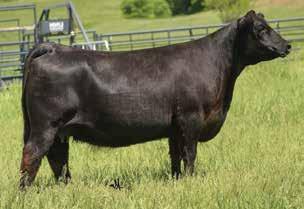
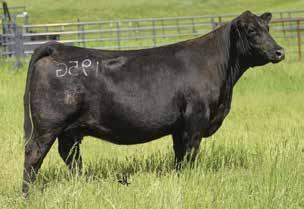
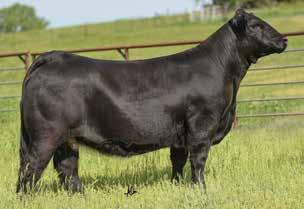

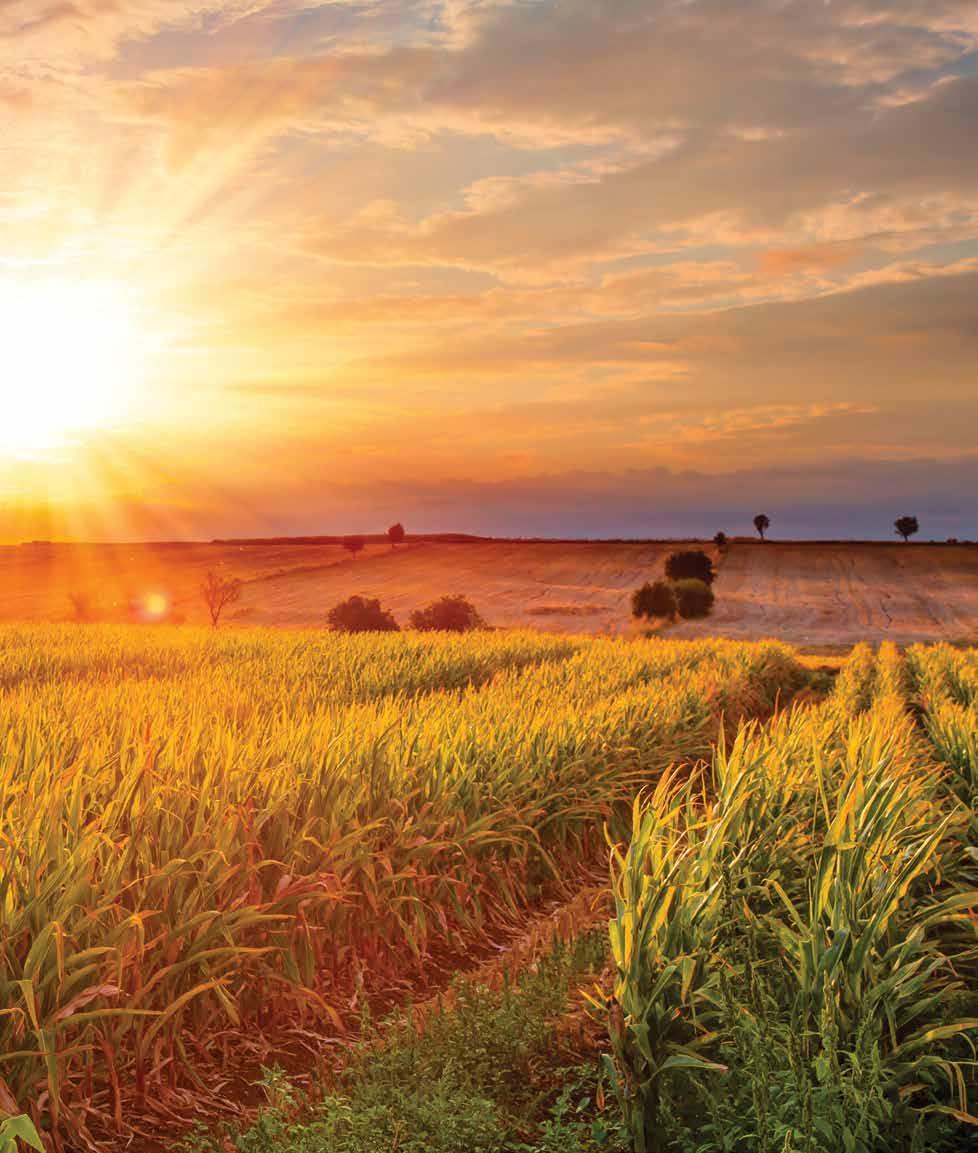
With Founder Membership #3, our family is proud to have been a part of the Limousin business since the breed’s arrival in North America. We focus on raising Limousin and Lim-Flex cattle that combine calving-ease and performance with above average docility and carcass merit. Our commitment has been, and always will be, to produce a quality product backed with the highest level of customer service.
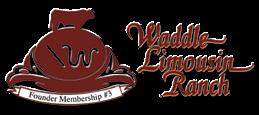
We have calves on the ground by DEBV Gladiator, CELL Heavy Hitter, MAGS Cable, MAGS Federal Reserve and MAGS Hard Core. Come see what a 54 year commitment to the Limousin business looks like.

continued from page 42
In utero calves are especially vulnerable to infection. If they survive, they can remain infected for life, repeatedly spreading the virus to other cattle.
“They show up as normal cattle but really, they’re shedding a tremendous amount of virus. They’re the ‘Typhoid Marys’ of BVDV spread,” said Vander Ley, assistant director of UNL’s Great Plains Veterinary Educational Center in Clay Center.
The cattle industry has vaccinated against the disease since the 1960s, but “the highly mutable nature of BVDV and the emergence of highly virulent strains of BVDV contribute to limited success of present control programs,” the Academy of Veterinary Consultants has stated.
Scientists identified the specific genetic structure associated with the disease earlier this century. A collaborative project involving scientists with the USDA’s Agricultural Research Service and Acceligen, a Minnesota-based private company, used gene editing to change the small number of amino acids that lead to BVDV vulnerability, while keeping the rest of the protein, CD46, unchanged.
“Our objective was to use gene-editing technology to slightly alter CD46 so it wouldn’t bind the virus but would retain all its normal bovine functions,” said Aspen Workman, a scientist with ARS’ U.S. Meat Animal Research Center in Clay Center, Nebraska.
A gene-edited calf, named Ginger, was born on July 19, 2021, and transported to UNL a week later for close monitoring by Vander Ley. Throughout, Ginger has remained a “bright, healthy calf,” normal both physically and behaviorally, which included a week with a BVDV-infected dairy calf that was shedding the virus in great volume.
The research findings were published online May 9 by the PNAS Nexus open-access journal, a sibling publication to the Proceedings of the National Academy of Sciences. Workman is lead author.
Ginger is a Gir, a tropically-adapted cattle breed used to develop Brahman cattle in North America. Follow-up research will require experimental replication in other cattle breeds. Ginger also will be monitored through pregnancy, if it occurs.
If the gene-editing approach proves viable, it could potentially reduce the cattle sector’s use of antimicrobials, Vander Ley said.
“The most successful version of the future I can see is one where we don’t have to deal with antimicrobial resistance because we just don’t use that many antimicrobials,” he said. “That’s better for everyone. That means that we have eliminated the cause of a lot of the antimicrobial use and we’ve eliminated that expense for livestock producers.”
Michael Heaton, a USMARC researcher for the BVDV project, concurred. This line of research “represents another opportunity to lessen the need for antibiotics in agriculture,” he said.
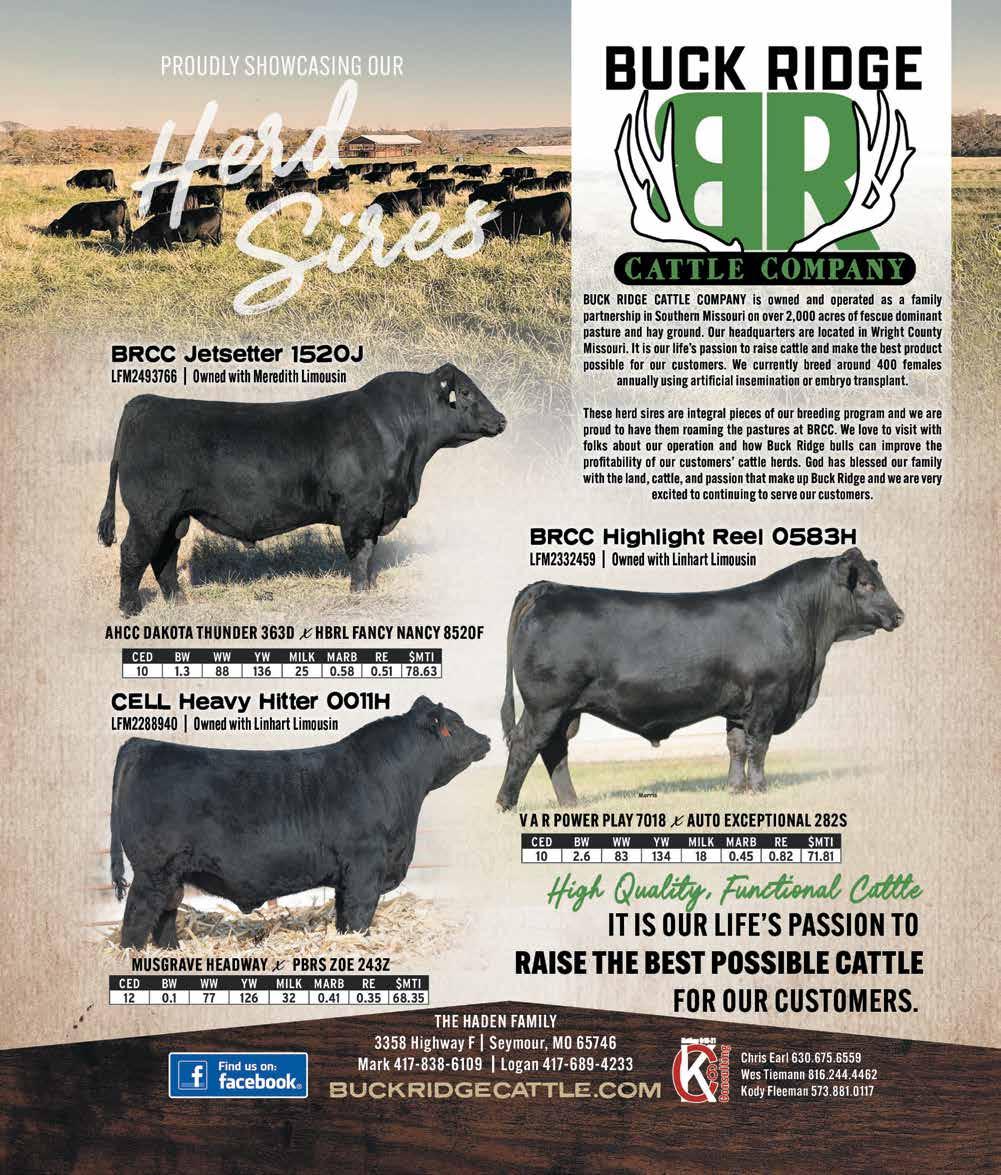
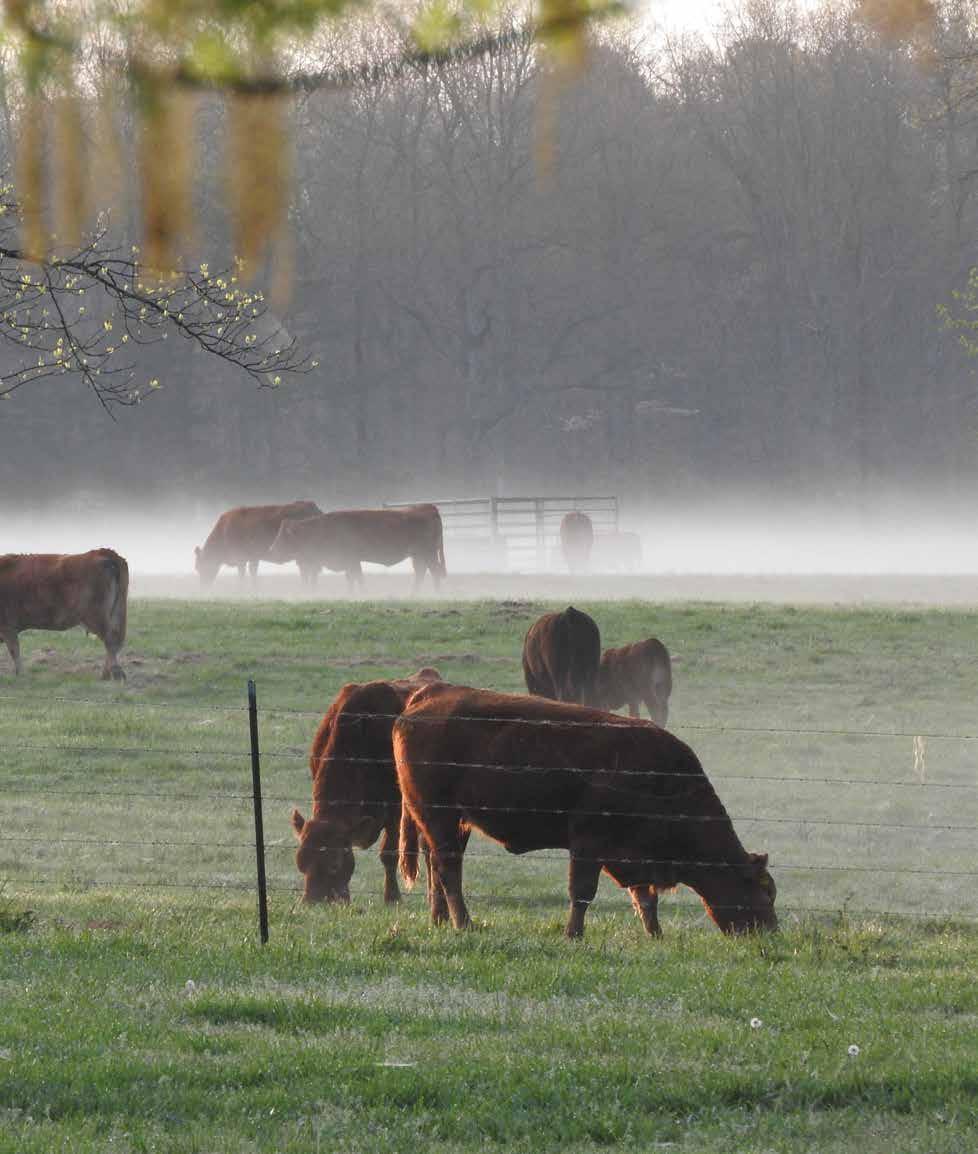
Trace a pencil up 100 miles north of Little Rock, Arkansas, on a map, and you’ll encounter the town of Leslie.
The naturally wooded area stretches across hills, mountains and plateaus, a far cry from the New Jersey landscape that Rick and Sandy Thomas called home in their early years.
“It’s rough, rocky and rugged,” Rick admits, but when he saw an ad in the paper for about 40 acres for sale, there was no question in his mind this was where they needed to be.
“We were part of the land movement,” he explains. “We just wanted the country life.”
Packing up their belongings, Sandy, too, was ready for the adventure.
“We decided we wanted to raise our daughter away from the busy city life,” she added.
Change didn’t come easy, however. Sandy says it was hard to make a living in the area initially. Surrounded by timber, the perfect opportunity presented itself, and Rick and Sandy started their own forestry company, sending crews all over the United States to plant trees and help improve forest land.
As the business took off, Sandy says she couldn’t help but notice the grass on their property was getting too tall for her liking. Coupled with a desire for daughter Amy to become involved in the livestock industry, the family purchased their first fullblood Limousin cattle in 1981. Commercial cattle joined the operation, and when the family started crossing those lines with Limousin bulls to create registerable offspring, Thomas Cattle Farms was born.
They may have entered the industry with no previous involvement, but today Rick and Sandy run more than 350 head of registered mama cows.
“I guess if we can be successful in the cattle business, anyone who wants to work hard can be,” Rick jokes.
He humbly says a lot of lessons were learned the hard way, but thanks to dedication and attention to detail, he and his wife have built a well-respected operation. Sandy maintains a constant eye on the herd—a diligent task that has helped her refine the cattle over the years.
“We don’t keep anything that doesn’t produce well,” she explains. “It’s something we’ve been tough on for many years.”
Bulls have to “look like they can do the job.” Cows have to display exemplary mothering abilities. And, every animal needs to be good tempered, deep bodied and big boned.
Expectations have been high since the start, but the set standards are listed with pride.
“We weeded out everything we didn’t like over the many years,” Sandy says. “Our cattle are beautiful, and they produce the way commercial cattlemen or anyone else wants them to.”
From auctions to private treaty and even online events, the farm has built a strong base of repeat customers from both the registered and commercial sectors of the beef industry. Thomas Cattle Farms’ genetics have reached across the country, with bulls being shipped to Louisiana, Oklahoma, Missouri, Alabama and Mississippi. Their ASRN tattoo, however, can be seen across the United States and even in Canada and Brazil.
When any potential customers come to look at their livestock, Rick says he likes to take them out into the pasture. Though he and Sandy encountered
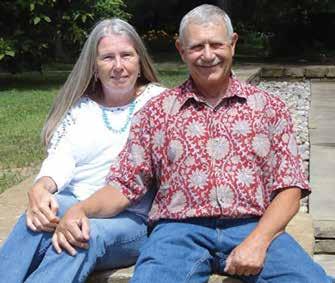

Bulls have to “look like they can do the job” and cows have to display exemplary mothering abilities. And, every animal needs to be good tempered, deep bodied and big boned.

continued from page 47
temperament issues when they first started breeding Limousin, he says great strides have been made over the years.
Thanks to careful breeding and careful selection, Rick knows every animal on their farm is calm. The herd is handled a lot on a personal level—without the use of four wheelers or horses—so the human presence is something they’re used to.
“You don’t need to cowboy an animal,” Sandy says. “We ease them. We don’t push them. We treat them fairly, and they respond to that. They’re treated gentle and they are gentle cattle.”
Rick and Sandy manage the herd on their own, and when they were getting started, having calm cattle was critically important. Rick took artificial insemination classes and most breeding was done at his hand.
There were some hard moments, Rick admits, but he and Sandy learned to pay attention to how the cattle feel by watching them move and interact. He says they discovered early on it’s easier to work with cattle that trust people.
Disposition isn’t the only thing the couple has seen change in the Limousin breed over the years.
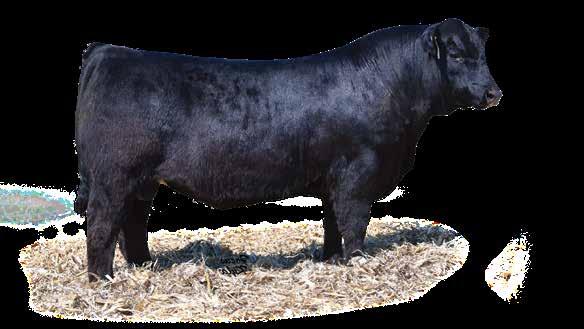
continued on page 50
Utilizing only the best bulls has been a core value of our operation since we began producing seedstock more than 30 years ago. Our extensive experience running a feedlot helps us learn first-hand what genetics work best for our customers. We take pride in the ability to improve our genetics year after year, and are confident these genetics can do the same in your herd.

FULLBLOODLIMOUSINALLIANCE.ORG
Come join this wonderful Limousin alliance that educates and promotes how Limousin growth and the F94L profit gene can greatly benefit you and your herd!
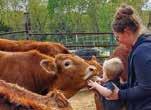
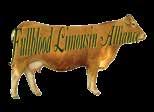
CEDAR CREEK RANCH
Betty Anglani
417-257-3614
DIAMOND W RANCH
Nancy Weems
918-864-9691
ANDERSON’S RED LIMOUSIN FARM
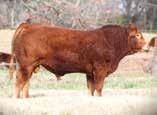


Gerald & Anna Anderson
724-428-3838
JARNAGIN LIMOUSIN



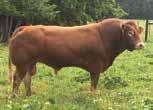
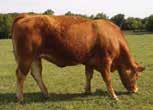

Jim & Bertha Jarnagin
865-603-3252
BROKEN SLASH L RANCH
Joe & Susie Latendresse
918-639-8438
GOSS LIMOUSIN
Anthony Goss
www.gosslimousin.com
KIM KOSMICKE, FLA Secretary
417-260-1297
FLAKosmicke@gmail.com
www.fullbloodlimousinalliance.org
GARRISON LIMOUSIN
Ron Garrison
417-838-1872
GOSS LIMOUSIN

Anthony Goss
www.gosslimousin.com
MINOR LIMOUSIN
Caleb & Tara Minor 417-576-6364
JARNAGIN FULLBLOOD HERD: (50 cows & bred heifers, 3 herd bulls, 9 younger bulls, 20 open heifers, 26 spring calves)
HERD SIRES: JL Poll Jameson (son of JL Irish Whiskey 275C) and UK Sires Proctor Borrins, Proctor Duvalier, Whiskey Infinity, Rhoney Isaac & Wilodge Cerberus
DIAMOND W RANCH
Nancy Weems
918-864-9691
CEDAR CREEK RANCH
Betty Anglani
417-257-3614

continued from page 48

When Rick and Sandy purchased a week-old bull in the early ’90s, cattle in the industry were pretty leggy. “Southern Cross” was one of the first polled fullblood bulls in the country, and his genetics did a lot for the farm and fullblood Limousin cattle.
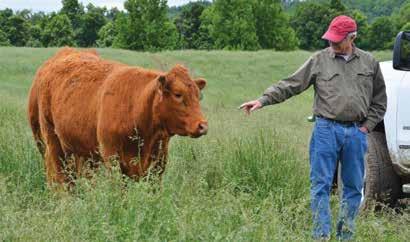
Sandy says he had a great disposition, but his biggest appeal was the muscle mass he offered in a much smaller frame size than what was standard at the time. He created such efficient cattle that he spent his entire life in Leslie with the Thomas family. Many of the cattle they run today can be traced back to his lineage.
“Once we get a hold of a bull we like, we wear it out,” Rick says with a laugh.

Their operation is spilt onto several different properties, so a good bull can be used on a good number of cows in just a few years. The definition of a “good bull” comes partially from Rick and Sandy’s personal preferences on phenotype, but is also dependent on what their customers are searching for.
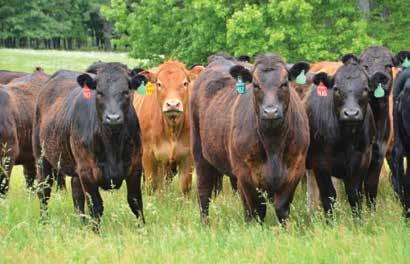
“The buyer speaks, so we have to listen,” Rick says.
Most of their commercial clientele are not full-time ranchers. With other jobs taking up most of the daytime hours, Rick says he knows they check their roughly 30-50 head after work or on weekends. With this in mind, he and Sandy like to offer low birthweight bulls that can still bring good muscling and power to the table.
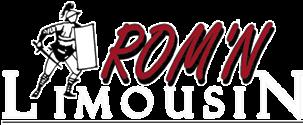 Thomas Cattle Farms in Leslie, AR, is home to more than 350 head of registered mama cows.
Thomas Cattle Farms in Leslie, AR, is home to more than 350 head of registered mama cows.
Even before making sales was a priority, Sandy’s goal has stayed simple each breeding season: cross cows with bulls that are going to result in the best progeny.
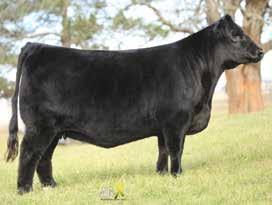
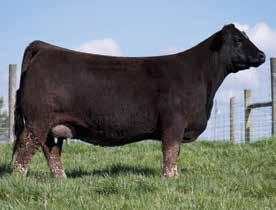
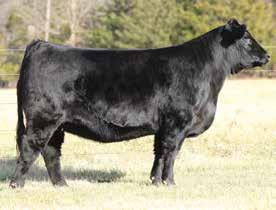
It’s a motto she and Rick learned from past mentors, and it’s one that has gained them the respect of both their customers and peers. Over time, she says those relationships have blossomed into lifelong friendships, a blessing they never anticipated. Though they might not have ever imagined themselves as cattle producers when they first met in New Jersey, nowadays Rick and Sandy say they’re a part of the best business around.
“It’s just a great industry to be in,” Sandy says. “It’s been good to know strong, American families—people that love our country, love their cattle and love family and God.”
Whatever they do in life, the Thomas family emphasizes honor and respect for both the land and the livestock they care for. Sandy explains that they believe it’s their duty to provide for the generations to come.
She says they’ve met a lot of good people over the years, and it’s the connections just as much as the joy of running cattle that keep her and Rick out in the pasture.
For the foreseeable future, the two look forward to keeping their red and black Limousin cattle grazing in Leslie. Even after all these years, the admiration for the lifestyle and the land they call home hasn’t faded.
“It’s pretty,” Rick says simply of their farm and their home. “I just like to be with the rugged country.”
In his mind, there’s no better place to raise cattle than on “the land that holds the world together.”
ABOUT THE AUTHOR: Megan Silveira is a freelance writer originally from Denair, California. She is currently based in Saint Joseph, Missouri. She completed her graduate studies in agricultural communications from Oklahoma State University in May 2021.


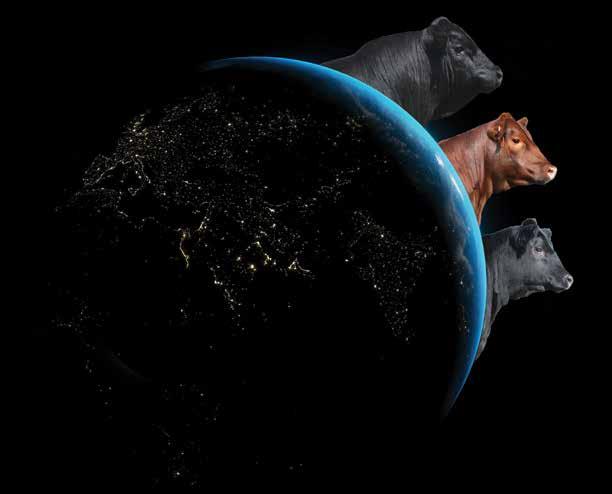
From the bustling big city streets to the store fronts of smalltown America, “help wanted” signs can be seen in almost every business window. It’s a problem our country has been facing for years, and agriculture, unfortunately, is not immune.
The U.S. Chamber of Commerce reports more than 50 million U.S. workers quit their jobs in 2022, many of whom were in search of an
improved work-life balance and flexibility, increased compensation, and a strong company culture. But according to Fast Company, lack of leadership is another main culprit as to why employees are leaving.
continued on page 54
Our program is built around improving our standing in the beef cattle industry. From pasture to plate, we strive to make our cattle as efficient and profitable as possible. If you are looking for genetics that can add industry-wide value to your program, give us a call.
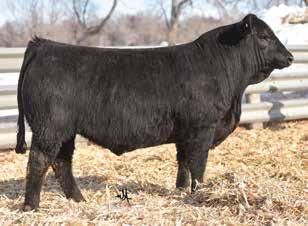
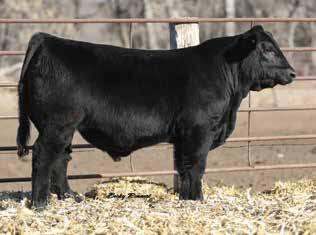
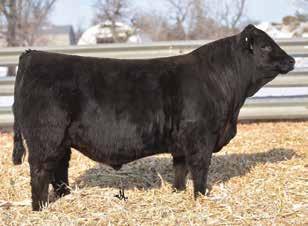


continued from page 52
To boost employee retention, farms need leaders who can effectively inspire and guide others. This may sound simple, but the job often requires its leaders to possess a handful of characteristics not necessarily used on other areas of the farm. These traits include:
Providing Context – As leaders, it is our responsibility to know the ins and outs of our operation. But what about our employees? Shouldn’t they also know what it takes to keep the farm profitable? According to Bob Milligan, Senior Consultant with Dairy Strategies, LLC, they should.
“Nearly all employees are interested in what is happening with the business that employs them – in your case, the farm. This knowledge is key to engagement,” Milligan says. “As farms become larger and employees more specialized, keeping everyone informed becomes more challenging and will likely require a higher priority and some formality. That system will be different for each farm, depending on the characteristics of the workforce, the uniquenesses of the farm, and the priorities of the owners.”
Even if the news isn’t good, transparency can build trust. Take time to keep your employees in-the-know on the business side of your operation.
For nearly five decades our goal has been to raise cattle that meet the needs of the beef industry. We have never went to the extremes, but have focused on calving-ease, maternal ability and carcass traits in an efficient package.
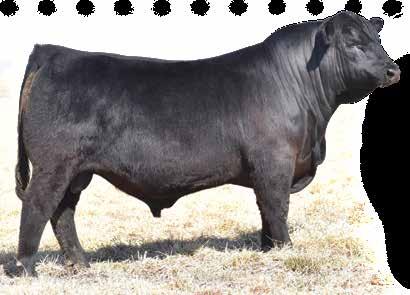
Being Proactive – When employees leave, managers often wonder what they could have done to prevent that employee from quitting. Good leaders, however, stay proactive to prevent employees from quitting in the first place.

“Leaders should remain continually engaged with their employees, asking them about their goals and needs, if they are feeling engaged and challenged, and how they can make the employee’s work life better,” says Ola Chowning, partner at global technology research and advisory firm ISG.
This requires leaders to show interest and compassion while also taking mitigating actions before an employee begins to think about leaving.
“Employees work for leaders from whom they can learn,” Chowning adds. “Share knowledge, share insights, be vulnerable and open. Allow employees the environment to ask questions and learn.”
Being Empathetic – All managers know that working with people can sometimes be one of the hardest parts of the job. But to be a great leader, one must possess empathy.
“At its core, leadership is ultimately about others. It means inspiring them to take actions beyond their capabilities, leading them in a direction that is compelling and inspiring. Empathy is the foundation of those actions,” says Lolly Daskal, leadership coach and CEO of Lead From Within.
Being empathetic with your employees allows you to better understand their perspective and gain insights behind their decisions, she adds. Furthermore, it also allows you to communicate in ways that make people feel safe to talk to you, making it more likely they will come to you when a problem arises.
Encouraging Growth – Great leaders see the potential and bring out the best from within their employees. Instead of allowing an employee to stay stagnant within their position, they encourage and help foster growth.

“Help employees find where their right fit is from a capability perspective,” Chowning says. “Give them candid feedback on how they perform to better allow them to recognize and further expand strengths and mitigate weaknesses. Give them stretch tasks that allow them to learn and grow. And, more importantly, stand behind employees when they are successful.”
Value Input - Your role as a leader isn’t to know all the answers; it’s to help your team develop the answers, says Shanna Hocking, a leadership consultant and author.
“Ask questions and truly listen to what your employees say,” she says. “They often have insights on what can be done to make the work better and more efficient. This is especially valuable when you’re starting a new project or initiative. Employees who feel heard and valued are more likely to want to contribute to projects and do their best work.”
“Leaders should remain continually engaged with their employees.”
We couldn’t be more thrilled to have the breed’s premier summer event in our home state this summer. Best of Luck, Juniors.

Thanks to our customers who have supported us thus far in 2023 and we look forward to working with you in the future.


 by Sarah Johnson
by Sarah Johnson
What began as an FFA project of two commercial cow-calf pairs that his father purchased for him in 2004, is now an elite purebred cow-calf operation Caleb and Tara Minor call their own—Minor Limousin. Caleb and Tara, along with their two children, Gabe and Reagan, run 65 Limousin, Lim-Flex and fullblood cattle near Strafford, Missouri.
After his involvement with that initial FFA project, Caleb was hooked. By 2008, Caleb had 15 head of his own and began the search for a Limousin bull to use on his commercial cows. His first registered Limousin bull came from Kristy DeOme and that’s when Caleb knew he had to become more involved with the Limousin breed.
When Caleb and Tara met in 2015, Tara had never been around cattle. “I didn’t know anything about cattle when we started and people would comment on the attitude of Limousin cattle and I would always say ‘Limousins are the calmest cattle I’ve ever been around’. We have to trust them with our kids
and we do. They’re calm and easy to work with and we must have that,” Tara said. Together they decided to transition the commercial cow herd to a purebred operation that could utilize their acreage more efficiently.
In 2018 Caleb and Tara purchased a pregnancy from Pinegar Limousin, which is now their lead donor, MINO Fiona 001F, a daughter of CJSL Creed 5042C and out of AUTO Callie 403D. “We have a lot of Pinegar genetics in our herd. They do really well for us and the crew there has been easy to work with,” Caleb said.

“We enjoy the people in the Limousin breed so much. Everyone was so helpful when we were just getting started. I would say the people are what has kept us in the breed more than anything,” Caleb said. “Boyce-Dill Cattle and the entire Pinegar crew have been wonderful to us. Anything we need, they’re there and super helpful. I don’t know where we would be if it weren’t for them
continued on page 58

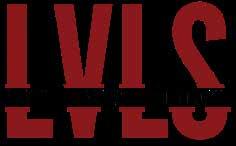
continued from page 56
helping us,” Caleb said. “To have those two families steer us in the right direction has meant the world to us.”
Over the past few years Caleb and Tara have worked to build their herd to have a well-established group of individuals. Their main goal is to sell elite show cattle, bred females and bulls. “I like the Limousin breed, I like the people in the breed and just everything about it,” Caleb said. “We would like to become a known source for top quality genetics.”
“The Limousin show family has been awesome to us. We figured the cattle would be something our kids would enjoy being a part of,” Tara said. Today, the donor females Minor Limousin utilizes are MINO Fiona 001F, AUTO Gitty 269G, AUTO Genevieve 284G, AUTO Strawberry 431D and MAGS Hemera 1641H.
A full circle moment for Caleb and Tara was their Inaugural Online Sale this past March where they sold 15 lots to seven states. The top-selling lot was MINO King Julian 011K, a double homozygous Lim-Flex son of AUTO King David 120E out of MINO Fiona that sold to Cross Creek Farms of Gray, Tennessee, and Broken Y Cattle of Waynesboro, North Carolina. Minor Limousin retained half semen interest and are excited to see what is up ahead for this young sire.
“We just want to get people into the Limousin breed at the end of the day,” Caleb said. “Anything to help grow the breed is what we strive to do.”
“Younger generations will keep the breed together,” Tara added.
Along with their online sale, Minor consigns cattle and genetics to the Great American Pie Sale, Sale Of Sales, A Night On The Town Sale and the National Sale. Minor Limousin has sold cattle to 12 states and Canada. “We try to keep our genetics out there more than anything,” Caleb said.
Caleb serves as Treasurer for the Missouri Limousin Breeders Association and as a board member for the Heart of Missouri Association. “We try to be involved in as much as we can be to help the breed and everyone involved. I want the breed to be around when our kids get older so they can have friends in the breed,” Caleb said. At the end of the day it’s truly about family and the people involved in the Limousin breed for Minor Limousin.
“I wish we had 100 more breeders like Caleb and Tara. They’re a great family—young breeders with vision and dedication to the Limousin breed. Their program is aimed in the right direction for continued success,” said Kiley McKinna of MC Marketing.
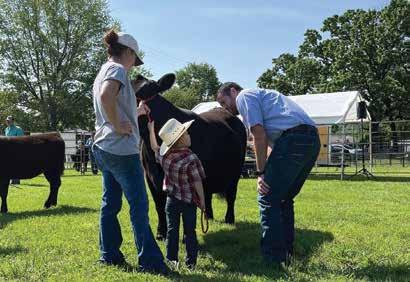
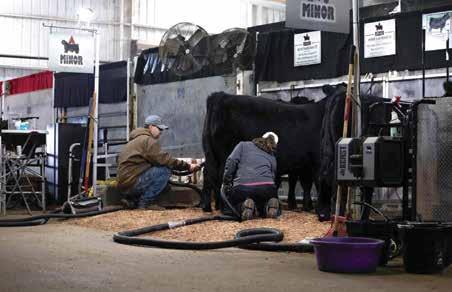
ABOUT THE AUTHOR: Sarah Anne Johnson raises registered Limousin & Lim-Flex cattle with her family and Coulton West in Ohio. She is a sixth-generation beef cattle producer, works as a District Sales Manager for Syngenta and is the Northern Region Sales Representative for Limousin365. She has also exhibited Limousin cattle on the state and national levels since the age of four and she served as a NALJA Board Member during her junior show career. Connect with her at 614-266-2646 or sarah@limousin365.com.
With two small children, the Minors put huge emphasis on the docility of their cattle. “We have to trust them with our kids and we do. They’re calm and easy to work with and we must have that,” Tara Minor said.
 What began as an FFA project of two commercial cow-calf pairs in 2004 has grown into an elite purebred cow-calf operation.
What began as an FFA project of two commercial cow-calf pairs in 2004 has grown into an elite purebred cow-calf operation.

We have always believed what separates good seedstock from great seedstock is the data. Over the decades, we have judiciously kept track of the latest advances in technology and how to best weave it into our breeding program. Whether it be actual performance, genomically-enhanced EPDs or feed efficiency, we have been on the front end of learning how to best measure then implement what we have learned. If data matters to you, trust Wieczorek Limousin to be your partner in success.
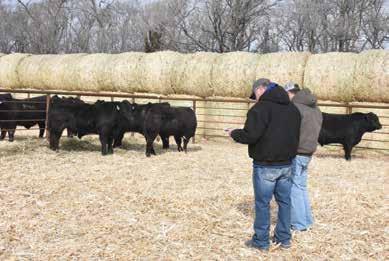

There are products we use in veterinary medicine that we also use in human medicine. These products are often referred to as “medically important antimicrobials.” In 2017, the FDA began implementing the Guidance for the Industry #213, otherwise known as the Veterinary Feed Directive (VFD). Implementation of the VFD focused on veterinary oversight of medically important antimicrobials delivered to livestock via feed and/or water.
The focus of FDA guidance #263 will primarily address the injectable and oral versions of these products, such as penicillin, tetracycline, and sulfa products. Guidance #263 recommends sponsors of medically important antimicrobial drugs that continue to be available over-the-counter (OTC) and approved for use in animals (companion and food-producing), regardless of delivery mechanism, to voluntarily bring these products under veterinary oversight or prescription marketing status. These product labels now contain the prescription (Rx) statement, “Caution: Federal law restricts this drug to use by or on the order of a licensed veterinarian.” All products covered under Guidance #263 were removed from OTC availability June 11, 2023.
While very little information about Guidance #263 was aimed toward livestock producers, this may have significant impacts on how livestock owners can access antibiotic therapy for their animals. While this change does not require the purchase of products from a veterinarian, going forward, producers will be legally required to obtain a prescription from a licensed veterinarian with which the producer has a valid veterinary-client-patient relationship (VCPR). This means for many producers that products they may have purchased from the local feed store, farm supply or local co-op may no longer be on those store shelves.
Much like when the veterinary feed directive was put in place in 2017, some of these businesses may simply pull these products from store shelves and decline to offer products as they do not have the framework in place to meet the legal burden of acting as a “Pharmacy” which requires the ability to review veterinary authorized prescriptions and track refills of those prescription products. For those that continue to stock these products on their shelves, producers will have to produce a prescription before purchasing.
Those producers who already have a VCPR in place and purchase
their animal health products through their veterinary office or who purchase through other distributors under an existing prescription system will likely notice little change in their ability to source these products. However, producers who don’t consult a veterinarian regularly will need to establish a valid VCPR before purchasing these products as they start to disappear from OTC access.
While the definition of a valid VCPR does vary from state to state, Nebraska’s definition of a valid VCPR is outlined in the Nebraska Veterinary Medicine and Surgery Practice Act as follows:
Veterinarian-client-patient relationship means that:
(1) The veterinarian has assumed the responsibility for making clinical judgments regarding the health of the animal and the need for medical treatment, and the client has agreed to follow the veterinarian’s instructions;
(2) The veterinarian has sufficient knowledge of the animal to initiate at least a general or preliminary diagnosis of the animal’s medical condition. This means that the veterinarian has recently seen and is personally acquainted with the keeping and care of the animal by virtue of an examination of the animal or by medically appropriate and timely visits to the premises where the animal is kept; and
(3) The veterinarian is readily available or has arranged for emergency coverage and for follow-up evaluation in the event of adverse reactions or the failure of the treatment regimen.
Furthermore, Nebraska Beef Quality Assurance (BQA) recommends that you have a written documented VCPR form filled out with your herd veterinarian and that you get a copy of all documented prescriptions. These records should be maintained for at minimum two years. Nebraska BQA offers a VCPR form on their website under the resources tab that producers can print off and fill out with their veterinarian. This VCPR form should be updated or reviewed annually.
So, to the nitty gritty, what products should producers expect to see these changes for, and when will this happen?
continued on page 62
“Docility and calving ease are the two number-one things for a commercial rancher. And the docility of the Lim-Flex is really great. But calving ease is top of the line. She has to be able to produce a calf without a lot of problems.”
- Shane Whiting, Commercial Cow/Calf Producer“Using a Continental breed such as Limousin or Lim-Flex on a British-based cow herd gives you the best of both worlds –the maximum combination of a balance between gain, feed efficiency and carcass quality.” - Dr. Kee Jim, CEO of Feedlot Health
Management Services

“Genomic testing, breeder focus and the heritability of carcass traits have enabled all of us as seedstock producers to make rapid genetic gain in carcass quality. In fact, the marbling EPD value in our breed reflects an improvement of 0.25 to 0.35 for both Limousin and Lim-Flex, making them very comparable to other Continental breeds.”
- Dan Hunt, Commercial Cow/Calf ProducerThe following are some products that will be seeing label changes to prescription-only status:
-Oxytetracyclines
Injectables: Liquamycin LA-200, Noromycin 300 LA, Bio-Mycin 200, Agrimycin 200, etc.
Boluses: Terramycin Scours Tablets, OXY 500 Calf Boluses
-Penicillins (Penicillin G procaine, penicillin G benzathine)
Injectables: Penicillin Injectable, Dura-Pen, Pro-Pen-G, Combi-Pen 48, etc.
Intramammary tubes: Masti-Clear, Go-dry, Albadry Plus
-Sulfa-based antibiotics (Sulfadimethoxine, sulfamethazine)
Injectables: Di-Methox 40%, SulfMed 40%
Boluses: Albon, Sustain III Cattle & Calf Boluses, Supra Sulfa III Cattle & Calf Boluses
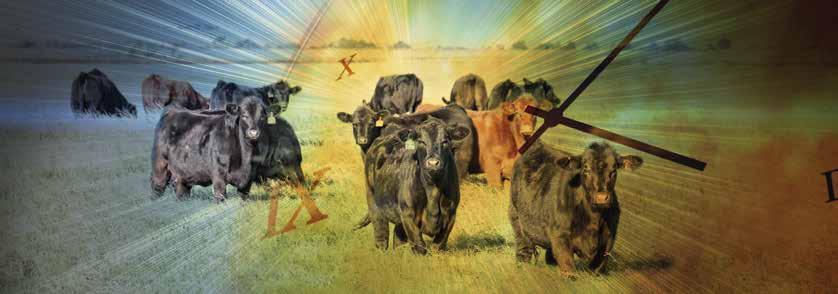
-Tylosin
Injectables: Tylan 50, Tylan 200 Cephapirin, cephapirin benzathine
Intramammary tubes: ToDAY and ToMORROW
When Guidance #263 was published on June 11, 2021, it was structured with a two-year phase-in for manufacturers of these products to make label changes and come into compliance with the
continued The Site That Never Sleeps 62 • JULY 2023
guidance so that they would be able to continue marketing their products without interruption. All products covered under Guidance #263 were removed from OTC availability June 11, 2023.
It is important to remember these critical products are not being removed from the marketplace but instead are being brought under veterinary oversight to combat overuse/misuse due to OTC access. Furthermore, producers should not “stock-up” on these products to avoid needing a prescription once this change takes effect. Again, these products will still be readily available. Animal health products have expiration dates and are sensitive to storage time and conditions. Purchasing large quantities of animal health products may lead producers to have an excess of products unused by the date of the product’s expiration. Products used after the expiration date are less effective, may not work as intended, and may lead to higher incidences of treatment failure. Disposal of expired antimicrobials can present challenges as well. In the long run, it is easier and safer to purchase products only when needed under the guidance of a veterinarian.
Additionally, this guidance affects only medically important antibiotic products. Antiparasiticides, injectable and oral nutritional supplements, oral pro/prebiotics, and topical non-antibiotic treatments will not be affected and will remain available through OTC marketing channels as before.

Since the beginning, Hunt Limousin Ranch has focused on the fundamentals such as calving-ease, growth, docility, maternal ability and industry relevant carcass traits. Over time, as technology has evolved, we have changed the ways we measure progress, but have never lost sight of meeting the genetic needs of our fellow seedstock producers and commercial bull customers. These sires illustrate our long-term commitment to raising cattle with real-world performance, backed by actual data and designed to meet mainstream industry demands.
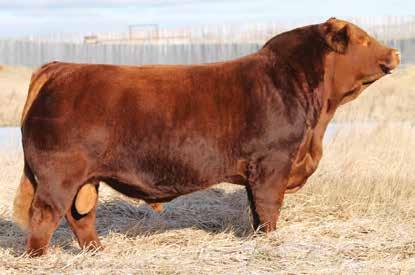

56% Lim-Flex • Homo Polled • Homo Black HUNT Herdsman 80H x DANH Dora 52D

CE: 10 BW: 1.3 WW: 81 YW: 126 MK: 19 CM: 10 SC: 1.00

DC: 15 YG: -0.32 CW: 58 RE: 1.06 MB: 0.32 $MI: 69
75% Lim-Flex • Homo Polled • Black HUNT Credentials 37C x HUNT Eliza 31E
CE: 9 BW: 1.6 WW: 78 YW: 118 MK: 29 CM: 6 SC: 0.90
DC: 17 YG: -0.28 CW: 36 RE: 0.68 MB: 0.05 #MI: 58
Purebred • Homo Polled • Red HUNT Testament 40T x JKTW Whiskey River 985 W
CE: 14 BW: -0.2 WW: 73 YW: 113 MK: 42 CM: 10 SC: 1.20
DC: 16 YG: -0.25 CW: 39 RE: 0.54 MB: 0.24 $MI: 63
Charles & Nancy Hunt
Dan, Melinda, Jenna, Adeline & Houston Hunt 10329 Hwy. 136 • Oxford, Nebraska 68967
308/991-3373 (Dan) • 308/920-1120 (Charlie) huntlimo@huntlimousin.com WWW.HUNTLIMOUSIN.COM

Want to save money on registrations, transfers and genomic profile testing? Looking to spend less time on the computer and more time outside? Tired of handwritten forms and paperwork? Want more reliable EPDs? Then the LIMS program is for you!
The Limousin Inventory Management System (LIMS) is an optional, web-based, whole herd reporting program for active members (Founder, Lifetime, Junior and Annual members) of the North American Limousin Foundation. The program was first launched in 2006. The current LIMS program is a cumulation of many years of trials, breeder feedback and the addition of new tools available in the DigitalBeef registry platform.
The LIMS program is mutually beneficial for both members and NALF. There are incentives to capture unbiased, complete performance and reproductive data for more accurate EPDs. Members benefit from a simplified and lower cost way of conducting business. One question we get asked a lot is “Isn’t my herd too small for LIMS?” The short answer: absolutely not. There is no herd too big or small for the LIMS program. Small to medium sized herds can see a cost benefit from moving to the LIMS program almost immediately. If you are curious to the exact dollar figure for your herd, reach out to the staff and we can break down the program for you in a way that makes sense and is not overwhelming. We can determine if the LIMS program is right for you.

Among the many benefits that LIMS has to offer, what stands out most among members is the cost saving aspect of the program. LIMS members are required to enroll 100% of their females, at a rate of $32 per active cow each year. The $32 cost to enroll each cow each
year includes the free registration and transfer (up to 30 months of age) for that year’s calf crop. With NALF’s current pricing structure, the least costly registration and transfer is $62 per animal. But with LIMS, it’s all covered in one fee of $32, which is at least a $30 savings for members.
Work smarter, not harder! Time is one thing we all wish we had more of, especially during calving and breeding season. Enrollment in the LIMS program breaks your herd out into spring and fall calving cows, with each set having their own data tab. This concentrates all calving records in one place in Digital Beef, allowing you to see exactly what calves have been registered to which cows, and who is missing data. Each cow enrolled in LIMS will need to have a calf recorded or a reason for no calf (example, calf died before weaning) for each calendar year, and each calf will need a weaning weight recorded or a reason for no weaning weight. The LIMS tab will help you identify these females or calves that are missing records. Complete performance and reproductive information required for inventory-based recording is submitted online. The more specific you are with recording this data, the easier and quicker your registrations will be later on. In addition, managing your herd through the many tools on the NALF DigitalBeef platform will also be easier and more comprehensive. DigitalBeef has the capacity to keep all these records for members, so you can look back on historical calf crops, not having to worry about losing data.
This total herd reporting program contributes more complete and comprehensive production information, helping position breeders
and the Limousin breed as a whole for future improvements. By reporting all your animals, you allow your top animals to stand out. The combination of performance data, genomic testing and NALF’s partnership with International Genetic Solutions has allowed for the most up-to-date EPDs on animals. As an IGS partner, these EPDs are comparable across 16 other breeds. These tools have helped Limousin identify areas of improvement and become more competitive in the seedstock industry.
LIMS members have access to the LIMS certified seal. This seal signifies commitment to providing whole herd performance data. This means that 100% of the registered cows in your program are enrolled in LIMS and requires you to report complete and comprehensive data on all your cows and calves. This total herd reporting program signifies to other members and commercial producers that you are
committed to providing more and better information on the genetic merit of your cattle.
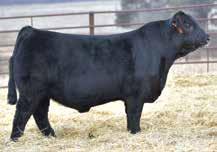

The certified LIMS seal appears on your member site and on the animal view screen of every animal in your herd. It is also available to all LIMS members and can be used to further promote their herd in sale catalogs, advertisements, etc.
With the ever-changing cattle industry, NALF strives to maximize profit for its members. LIMS members have seen more precise EPDs and have saved time and money from being a member. You are encouraged to look into the program and see how it can benefit your cattle operation.

If you want to enroll in the LIMS program, contact Alison Jones, alison@nalf.org, or Tammy Anderson, tammy@nalf.org
continued on page 68
Each and every day we are on the lookout for progressive new ways to not only improve our genetic base, but better serve both our fellow seedstock producers as well as our commercial bull customers. At Hager Cattle Co. progress is about the journey, not the destination.
Official Publication of the North American Limousin Foundation
2005 Ruhl Drive • Guthrie, OK 73044 405/260-3775 • Fax: 405/260-3766 www.Limousin365.com
BREEDER ADVERTISING RATES
FULL PAGE $1,150
2/3 PAGE ........................................................................................ $950
1/2 PAGE ........................................................................................ $775
1/4 PAGE $500
All advertisements are 4-color process
ISSUE MATERIALS PUBLISHED
January - Spring Sale Edition Dec. 1 Dec. 23
April - Herd Bull Edition Mar. 1 Mar. 25
July - Breeder Directory Edition June 1 June 25
October - Fall Sale Edition Sept. 1 Sept. 25
Advertising materials to Kyle Haley 405/260-3775
• kbhaley2@gmail.com
CLOSING DATES
Refer to listing above.
ADVERTISING SKETCHES
Requests for advertising layouts must be in the L365 office 10 days before copy deadline.
TERMS
All accounts are due and payable as billed. Interest charges of 1-1/2% per month (18% APR) will be assessed to 30-day unpaid accounts. Customers with overdue accounts will be put on a prepay basis for subsequent advertising business.
CONTRACT DISCOUNT
L365 contracts for 4-time print and annual digital/print combinations are available at substantial discounts. Contact the L365 field representative in your area or call the L365 office at 405/260-3775.
DIFFICULT ADS
Ads requiring substantial extra production work will be assessed extra charges at standard shop rates. If you prefer no extra charges, request us to simplify the ad at our discretion if necessary.
COPY CHANGES
Alterations in advertising copy, if requested after closing date, will be made only if time permits.
REPRINTS
Advertising reprints are available. Requests for reprints must be made at the time the order for the ad is placed.
All other questions, contact the L365 office.
continued from page 67
December 1 - February 15
• Enroll Spring inventory
• Designate any animals that need to be moved to Fall season
• Enter disposal codes for females no longer in herd
• Mark any foreign, recipient females and donor dams appropriately
• All calving data due for previous year’s Spring enrollment
• No progeny code required if no calf was born
• All weaning data due (weight/docility) for previous year’s Spring enrollment
February 23
• Late deadline for any add/removal to your Spring inventory
• No late period allowed for weaning and calving data
February 25
• First half SPRING cow assessment and second half FALL cow assessment invoices mailed out
May 1 - July 15
• Enroll Fall inventory
• Designate any animals that need to be moved to Spring season
• Enter disposal codes for females no longer in herd
• Mark any foreign, recipient females, and donor dams appropriately
• All calving data due for previous year’s Fall enrollment
• No progeny code required if no calf was born
• All weaning data due (weight/docility) for previous year’s Fall enrollment
Spring Season: January 1 through May 31
Fall Season: June 1 through December 31
The North American Limousin Foundation would like to recognize the following breeders for their commitment to whole herd reporting through LIMS participation during the past year:
Actis Ranch
Bar JZ Ranches
Beckman Farming & Livestock
Beus Cattle Co.
Blaydes & Sons Limousin
Bosch Farms
Boyer Family Farms
Boyer Limousin
Brehm Farms
Buck Ridge Cattle Co.
Buck’s Limousin Farm
Bullis Creek Ranch
CAF Cattle
Coleman Limousin Ranch
Conley Cattle
Coyote Hills Ranch
DEBV
DeRungs Farms
DMW Cattle Co.
Drew Abbas
Duckett Limousin
Duff Limousin
Easterly Romanov Ranch
Eggbar Limousin
Excel Ranches
Fawley Farms
Ferrat Ranch
Fuchs Limousin
Gates Limousin Ranch
Glen Odglen
Gregory Rechberger
GV Limousin
Hager Cattle Co.
Hanzi Cattle Co.
Hunt Limousin Ranch
Inman Limousin
J&J Cattle Co.
Jerome Rosenquist
Ken Krom & Family
Lawrence Family Limousin
Lazy Brook Limousin
Leishman Family Limousin
Lenape Limousin
Leonard Limousin
Lewis Limousin Farms
Linhart Limousin
Little’s Limousin
Live Oak Cattle Co.
Locust Lane Limousin
Lonely Valley Limousin
Long & Sons Limousin
Lura Limousin
Lyon River Front Farm
Magness Land & Cattle
McCann Farms
Meckley Family Farms
Middleton Limousin
Mill Road Limousin
Misty Morning Limousin
Mitchell Farms
Ochsner Limousin
Parkinson Cattle Co.
Peterson’s L7 Bar Limousin
Reid Cattle Co.
Ridgeway Family Farm
Rops Limousin
Running Creek Ranch
Schock Limousin
Schrock Limousin
Sleiter Limousin
Spade Limousins
Steve Thompson
Super C Limousin
Symens Bros Limousin
T. Hart Cattle
T4 Livestock
Torgerson Limousin
Trails End Cattle
Treftz Limousin
Tubmill Creek Farms
Tyler Landreth
Van Horn Limousin Farm
Vaughn Farms Limousin
Venner Family Limousin
Voigt Cattle
Vorthmann Limousin
Waddle Limousin Ranch
Wieczorek Limousin
Willow Brook Cattle
Willow Creek Farm
Wulf Cattle
Hayhook Limousin is your tried-and-true source for proven Limousin genetics. We raise black, polled Limousin and Lim-Flex cattle that thrive in the real world. If you are looking for cattle with optimum birthweights and growth, as well as maternal and carcass traits — we are your proven source.
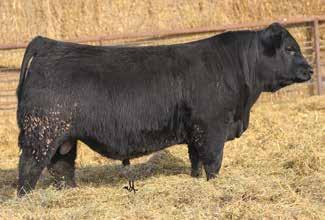
CE: 11
BW: 0.5
WW: 95
YW: 148
MK: 22
CM: 7
SC: 1.60
DC: 16
YG: -0.34
CW: 54
RE: 1.30
MB: 0.01
$MI: 62
Purebred • Homo Polled • Homo Black
CELL Envision 7023E x COLE Miss Tuff Enuff 512C
CE: 13
BW: -0.7
WW: 79
YW: 125
MK: 17
CM: 8
SC: 0.60
DC: 17
YG: -0.36
CW: 46
RE: 1.13
MB: -0.01
$MI: 57
Purebred • Homo Polled • Homo Black CELL Envision 7023E x COLE Miss Xerox 470B
We have a choice selection of young bulls and replacement females for sale at the ranch. Call today.
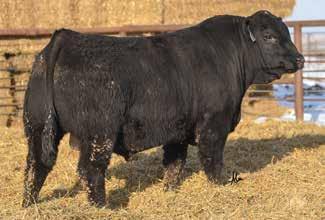
Judy Bugher
405/306-1315
Edna Manning
405/306-1316
9700 Slaughterville Rd. • Lexington, OK 73051
Ranch Office: 405/527-7648 • email: hayhooklimousin@gmail.com
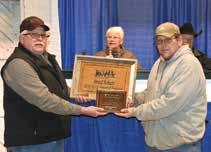


Ican’t believe we are almost halfway through 2023. It seems like we were just preparing for Cattlemen’s Congress, and now Junior Nationals is here. I hope you all made it through planting and breeding in one piece. Here in Colorado we’ve had one of the wettest months of May on record. It was much needed, and it’s nice to see so much green grass. I was fortunate enough to spend two and half weeks this March up in Montana calving out cows for our research project. Along with the 220 Angus cows bred for the research project, the ranch also has a number of Wagyu females, as well as some other crossbred cows totaling around 350 head. With input costs as high as they have ever been, I found myself asking “Are we getting the most we possibly can out of these cows? How can we utilize the existing cowherd to increase the producer’s bottom line, and efficiently produce a desirable, highquality product for the consumer?”


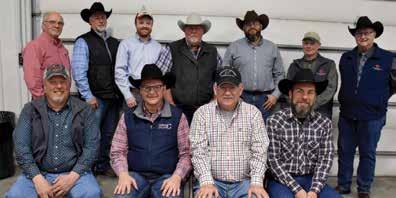
Like it or not, there is not one single breed of cattle that does it all the best it can possibly be done in all aspects when it comes to profitability. At the same time, we don’t want to go down the rabbit hole of single-trait selection. Enter: crossbreeding. This term is thrown around in the cattle industry on a regular basis. Putting Limousin bulls on Angus cows allows us to take advantage of breed complementarity, which results in heterosis, or hybrid vigor. Heterosis refers to the superiority of the resulting offspring from a crossbred mating. Dr. Bob Weaber, geneticist and head of Kansas State University’s Eastern Kansas Research and Extension center, describes heterosis as “the extra boost in performance we get above the average of straightbred parents’ expected performance,” or the “icing on the cake.” Our research calves in Montana are a cross of
continued on page 72
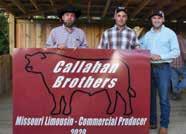

We were both humbled and pleased with the results of our first production sale. We appreciate the support of our many customers and look forward to working with you in the future.
Mark Your Calendar
JANUARY 27, 2024
Best of Luck to all the Juniors in Rapid City this Summer.
Andy & Tammy Schmalshof
Adam, Jonelle, Peyton, Carrina & Dixon Schmalshof
436 140th St.
• Avon, IL 61415
Adam, cell: 309/333-3044

• Karen, Griffin & Drake Reese
• Andy, cell: 309/333-0029
• adam.atak@gmail.com
Follow us on ATAK Limousin
Our Main Building Blocks, along with a solid stable of premier brood cows, have our program pointed in the Right Direction.
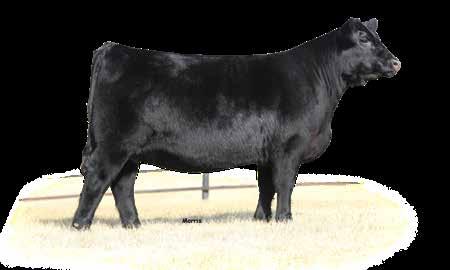
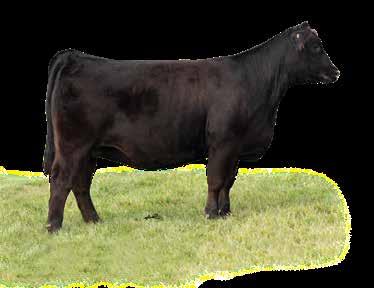

Official Publication of the North American Limousin Foundation
2005 Ruhl Drive • Guthrie, OK 73044
405/260-3775 • Fax: 405/260-3766
www.Limousin365.com
Publisher: L365
PUBLISHER EMERITUS—Dan Wedman
PUBLISHER EMERITUS—Dale F. Runnion
EDITOR—Kyle Haley
ADVERTISING MANAGER—Lindsey Meyer

CIRCULATION—Jeri Duerr
ART DIRECTOR—Ricki Rookstool
continued from page 70
high yielding, feed efficient Limousin and Lim-Flex bulls on Angus cows, with an inherent quality grade advantage. Crossbreeding allows us to strike a balance between the two, attaining carcass quality, gain and feed efficiency. These calves can not only hit the Prime and Choice targets but can do so without hanging as many yield grade fours and fives.
The advantages of heterosis does not stop at the terminal cross. The Limousin-influenced F1 female brings a lot to the table as well. Dr. Weaber goes on to explain how “We get our biggest boost in performance due to heterosis in lowly heritable traits like cow longevity and fertility.” While heritability of reproductive traits is low (growth traits are moderately heritable, and carcass traits are high), heterosis is inversely related to heritability. The greatest advantages of heterosis can be seen in these reproductive traits such as milking ability, total maternal and fertility. The longer a cow remains in the herd, the more money she puts in your pocket. After all, you can’t get paid premiums if she doesn’t have a calf to start with.
The concept of heterosis does not stop after the first generation of implementing a crossbreeding program. Heterosis is retained in the herd even with the continued mating of two F1 animals. Look at it as the opposite of inbreeding. In his article “The Value of Heterosis in Cow Herds,” Dr. Matt Spangler, Extension Beef Genetics Specialist at the University of Nebraska – Lincoln states “Hybrid vigor can also be thought of as the ‘anti-inbreeding.’ Inbreeding increases uniformity by increasing homozygosity but also creates ‘inbreeding depression’ or a general decrease in survival and reproductive traits that can be caused by a decrease in heterozygosity.” Crossbreeding helps to provide a relatively simple way to introduce new genetics into a population, while at the same time avoiding the genetic conditions that come along with breeding closely related cattle.
FIELD STAFF:
NORTH REGION—Sarah Johnson
614/266-2646 • Sarah@L365.com
SOUTH REGION—DeRon Heldermon
405/850-5102 • deron@limousin365.com
U.S.
___ $30 (1 year)
___ $40 (2 year)
___ $52 (3 year)
INTERNATIONAL
___ $40 (1 year, Canada)
___ $50 (1 year, Surface Mail)
___ $100 (1 year, Air Mail)
All payments to be paid in U.S. Dollars
L365 reserves the right to refuse any advertising or copy at its sole discretion. L365 assumes no part in guaranteeing the integrity or character of any advertiser. L365 accepts no responsibility for the accuracy of any photographs except those of the staff. L365 cannot be held responsible for the content of submitted advertising.
Freelance Manuscripts & Photographs: L365 publishes news and educational material about Limousin cattle, of use to and about their owners. Contributors are invited to submit material of this nature. Preference will be given to material that is accompanied by photographs or appropriate illustrations. Manuscripts accepted for publication are subject to editing and revision to meet requirements for publication.
Between offering the highest-quality Limousin and Lim-Flex bulls, genomic testing, a multi-breed genetic evaluation, and honest, unbiased phenotypic data collection, this breed is more than doing our part to improve not only the seedstock industry, but the beef industry as a whole. At the end of one particularly long calving day in Montana, I remember sitting in the side-by-side thinking how I hadn’t had a chance to really evaluate any of the calves on the ground. I was so concerned with getting babies paired, tagged and out of the calving pasture that I hadn’t taken any time to truly look at the cattle. The first calf born the next morning was a stout-made, big footed, thriving heifer, as if to say to me “slow down and look at what this breed can do!” Exciting times are ahead, and I’m forever grateful to work for a breed that I love and believe in. I look forward to catching up with as many of you as possible in Rapid City for the National Junior Limousin Show and Congress. Safe travels!



In the last few months, I have had to confront one of the biggest challenges presented to me that I have ever had to face in my life. I would try to do many things I had done in the past with no problem, but now I could barely do them, and it would tear me down and make me feel like a failure. I knew I had two choices: to get up and keep going or stay down and let the challenge claim victory over me. I chose to keep going and push through this obstacle as much as possible to continue doing the things I love. I strived to face the problem and not let it get me down or stop me. I was determined to ensure this challenge would not define who I am or what I can do. Many times, in life, we may get knocked down and thrown around. At some point in time, we will all be confronted by some of the most challenging obstacles, or we will have to make tough decisions. We must choose if we want to overcome it all or let it stop us from
continuing. Life does not wait on us but keeps going whether we continue to move ahead or not. We may not know the next step or how we should react. However, during these times, we need to focus on our inner strength, our faith and even the support of our friends and family.
One of the greatest lessons I have learned through all of this is that I needed to pick myself up and keep moving forward. It is a mindset. By remaining positive and working through our challenges, we often are provided with greater opportunities. We all need to remember that no matter what has been thrown at us, we need to just keep going.
“I can do all things through Christ which strengheneth me.”
Philippians 4:13
PRESIDENT, Shelby Hubbard Miami, OK shelbyhubbard5276@gmail.com
VICE-PRESIDENT, Landry Kleman Nazareth, TX ltkleman@hotmail.com
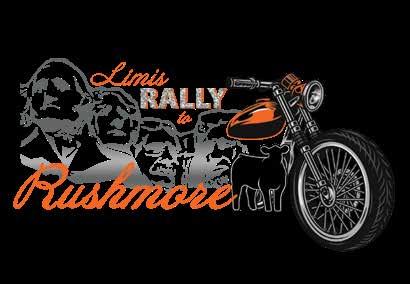
SECRETARY, Samantha Moore ......................................... Staunton, VA 0.samanthamoore@gmail.com
TREASURER, Riley Smith Macomb, IL riley.smith103z@gmail.com
Wiley Fanta ..................................................................... Starbuck, MN rbg.14@icloud.com
Mikayla Askey ........................................................... Queen Creek, AZ mimaas2003@gmail.com
Nikki Keeton.................................................................. Wolfforth, TX nkeeton@ttu.edu
Eliza Truel Skiatook, OK entruel@gmail.com
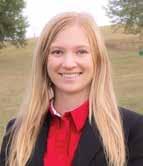
Lily Mitchell ................................................................... Boscobel, WI springcreeks@icloud.com
Ryleigh Morris Ash Grove, MO ryleighmorris04@gmail.com
As we celebrate 49 years of raising Limousin cattle, we are beyond thankful to be involved in production agriculture and for this way of life that has helped us raise our family. To put it simply, we have been blessed and we thank our many valued customers for making it all possible. Even as we reflect back on our storied history, we look forward to the many chapters not yet written.

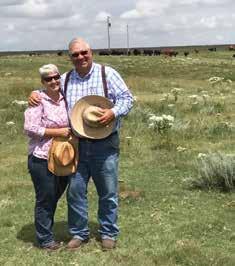

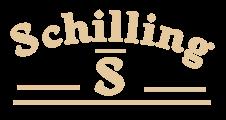


Remember us for all your bull and female needs.

March 27, 2024


Come join us in adding to our story.

Our 54 years in the Limousin business has been a labor of love from the beginning. The North American Limousin Junior Association officially turns 50 years old in July of 2023. I was fortune enough to be one of the junior members who helped organize, write the by-laws and get them approved. Of the five of us juniors, I am the only one still in the Limousin business. It was also my honor to serve on the first NALJA Board of Directors, as NALJA’s second president and as one of the originators of the first National Junior Show in 1976. Looking back, of course there are things we would do differently, but our operation has no regrets and would do it all over again. Cheers to 50 Years.
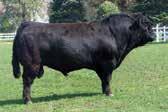


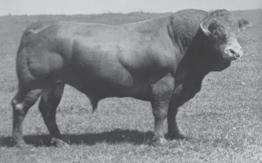


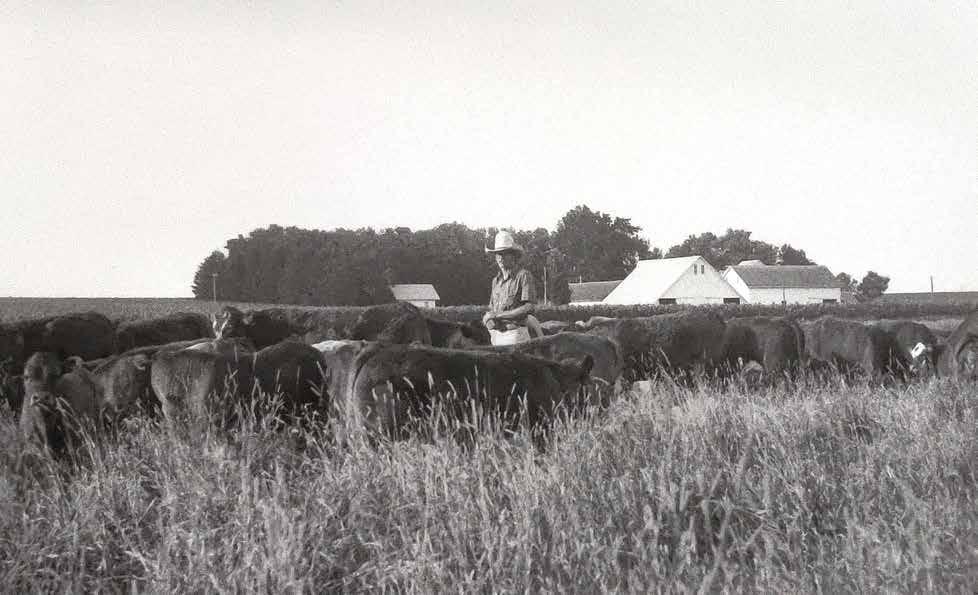
MARK & SHERYL LEONARD
1362 Hwy. 59, Holstein, IA 51025 712-368-2611 work • 712-830-9032 cell

Al Morales, herdsman, 712-304-2035 mark@agcomfinancial.com


In the Limousin Business Since 1969 www.LeonardLimousin.com

“People who end up as first don’t actually set out to be first. They set out to do something they love.”
Condoleezza Rice
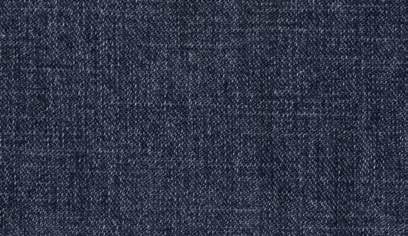
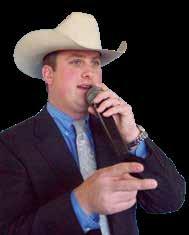


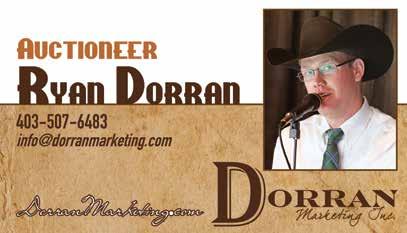

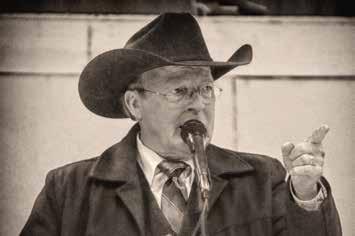



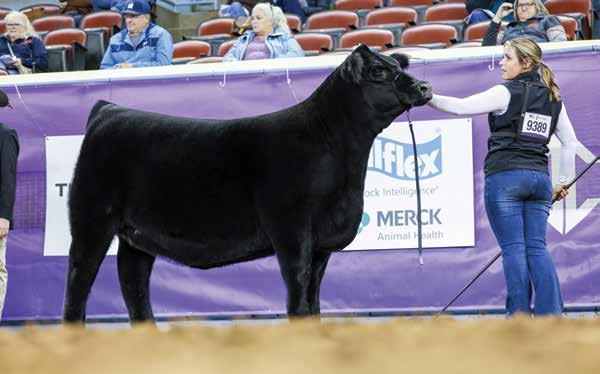

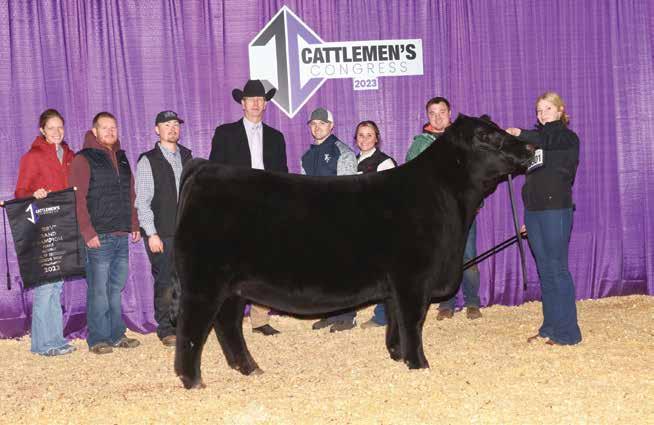
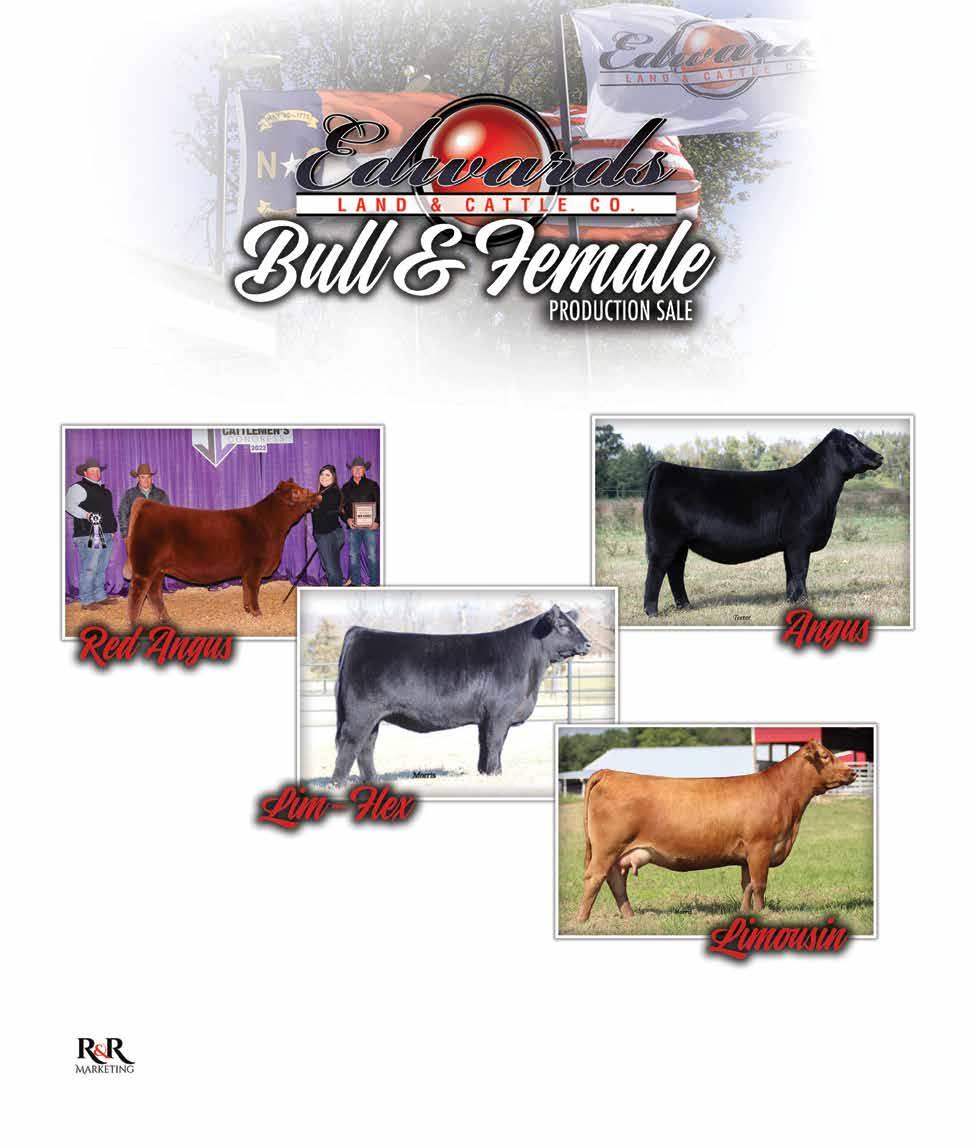
TheIf you are looking to gain an advantage during these historic times in the cattle industry, consider the genetics available at Lawrence Family Limousin. We have been progressive in raising cattle with a distinct advantage in both production and carcass traits for more than 30 years. Through the use of genomics and data collection, we learn both the good and bad about our cattle so we can work to improve and produce a better product for our customers.
Take advantage of LFL genetics and watch for our cattle at sales throughout the fall. If you are looking to gain the advantage of LFL genetics, contact us today.



